Home Blog
Gary Kirsten: A Cricketing Icon

Introduction to Gary Kirsten
Gary Kirsten, renowned as one of the most prolific cricketers in the history of South African cricket, was born on November 14, 1967, in Cape Town. His early life unfolded in a country marked by political tension and social changes, which substantially influenced his formative years. Growing up in a modest family, Kirsten developed a keen interest in sports, particularly cricket, at a young age. His father, who was also involved in sports, played a crucial role in nurturing this passion, often taking him to local matches and encouraging him to play.
As a child, Kirsten faced numerous challenges inherent in South Africa during the 1980s, a period characterized by apartheid and significant societal upheaval. Despite these difficulties, he found solace and a sense of identity within the sporting world. His early cricketing experiences were primarily structured around school competitions and local clubs, which laid a robust foundation for his future. Kirsten’s dedication to the game quickly became evident; he possessed an innate talent that distinguished him from his peers, combining skill with strategic acumen.
Kirsten attended the prestigious Reddam House School, where he further honed his abilities on the cricket field. His commitment and hard work paid off when he was selected to play for the Western Province under-19 team. It was during these formative years that he learned crucial life lessons on discipline, teamwork, and resilience—qualities that would later serve him well in his cricketing career. His relentless pursuit of excellence culminated in his national debut for South Africa in 1993, solidifying his status as a key figure in South African cricket history. Through perseverance and talent, Gary Kirsten emerged from a tumultuous backdrop, carving out a legendary career that would inspire generations to come.
Rise to Prominence
Gary Kirsten’s ascent in the cricketing world is a tale characterized by dedication, skill, and perseverance. Born on November 14, 1967, in Cape Town, South Africa, Kirsten’s early introduction to cricket was encouraged by his family. He honed his craft on the local pitches, showcasing remarkable talent from a young age. His journey through the ranks began with Western Province, where he impressed selectors with his consistent performances in domestic cricket. He made his first-class debut for Western Province at the age of 19, quickly capturing attention with his technique and temperament.
During his domestic career, Kirsten displayed a versatility that distinguished him from his peers. His standout performances in the early 1990s, including a remarkable 300 against Griqualand West, placed him firmly on the radar of the national selectors. This innings not only demonstrated his ability to construct long innings but also exhibited the mental resilience necessary for success at higher levels. As Kirsten continued to accumulate runs, critics began to discuss his potential impact on the national team.
In 1993, Kirsten earned his maiden call-up to the South African national team for an ODI series against India. His initial international outings showcased the challenges that come with representing one’s country, as he aimed to adapt to the fast-paced nature of international cricket. Despite a shaky start, Kirsten’s dedication bore fruit as he emerged as a reliable component of the batting lineup. His performance in the 1996 Cricket World Cup, where he scored 188 against the UAE, marked him as a player of substance and resilience, affirming his position in the team. Such efforts solidified his rise in prominence, earning him recognition as a promising player in the international arena.
Key Achievements in International Cricket
Gary Kirsten’s illustrious career in international cricket is characterized by numerous milestones that solidified his status as a pivotal figure in South African cricket. Making his Test debut in 1993 against India, Kirsten quickly established himself as a reliable opening batsman. Over his 11-year Test career, he accumulated a remarkable 7,289 runs at an impressive average of 53.31, underpinned by 21 centuries. His highest score of 278 came against England in 1999, a performance that showcased his exceptional skill and determination on the field.
In the One Day International (ODI) format, Kirsten’s contributions were equally significant. He played a total of 192 ODIs, scoring 7,289 runs, with an average of 44.83. This included 19 centuries and 39 half-centuries, highlighting his consistency and ability to anchor innings. One of his career-defining moments came during the 1996 Cricket World Cup, where he played a vital role in propelling South Africa to the semi-finals. His innings of 88 runs against West Indies during that tournament is still remembered for its strategic impact and composure under pressure.
Kirsten’s prowess extended beyond his personal achievements; he was instrumental in the South African team’s transition into a competitive force in international cricket post-apartheid. His partnerships with other great players, often setting the foundation for significant victories, demonstrated his understanding of the game and the importance of teamwork. Kirsten also earned recognition as one of the finest players to face spin, an essential skill that contributed to his success in various conditions around the globe.
Beyond statistics and records, Gary Kirsten’s legacy in international cricket is also marked by his sportsmanship and leadership qualities, making him a respected figure both on and off the field.
Playing Style and Techniques
Gary Kirsten’s playing style as an opening batsman was marked by a unique blend of technique, temperament, and tactical awareness, which played a significant role in his success on the international cricketing stage. His batting technique was characterized by a solid and compact stance, allowing him to play both pace and spin effectively. Kirsten’s ability to keep his bat straight and play late enabled him to defend accurately while also executing elegant drives that graced the boundaries.
One of Kirsten’s notable strengths was his mental resilience and adaptability. He exhibited an exceptional capability to adjust his game according to various match situations, pitches, and opponents. This adaptability was evident when he faced a diverse array of bowlers during his career, from the fast and bouncy track in Australia to the slower, turning pitches in subcontinental countries. His cricketing intellect allowed him to assess conditions rapidly and make informed decisions at the crease. Moreover, his profound understanding of bowlers’ strategies enabled him to capitalize on their weaknesses, often resulting in substantial partnerships at the top of the batting order.
Additionally, Kirsten’s dedication to fitness and conditioning played a crucial role in his playing style. His commitment to physical preparedness allowed him to maintain concentration over long spells, a vital attribute for an opening batsman facing new ball bowling in test matches. As he evolved through his career, Kirsten became known for his exceptional ability to score runs against the new ball, often laying a strong foundation for his team’s innings. His combination of technical prowess and strategic acumen made Gary Kirsten a formidable competitor, earning him a place among the legends of the sport.
Challenges and Setbacks
Throughout Gary Kirsten’s illustrious career as a cricketer, he encountered numerous challenges and setbacks that tested both his physical and mental resolve. As a professional athlete, Kirsten faced the relentless pressures of maintaining peak performance, which was often complicated by injuries. Sustaining injuries can be particularly daunting in the demanding world of cricket, where stamina and agility are paramount. Kirsten experienced his fair share of ailments, which sometimes sidelined him during crucial phases of his career.
Form slumps were another significant hurdle for Kirsten. Like many professional athletes, he encountered periods where he struggled to perform at his expected level. These moments of self-doubt could have been detrimental, yet Kirsten managed to turn these adversities into learning experiences. He cultivated a mindset that emphasized resilience and determination, which allowed him to navigate these lows effectively. This attitude was critical not only for his personal success but also for inspiring teammates during challenging matches.
Criticism also played a role in Kirsten’s cricketing journey. Being in the public eye, he faced scrutiny from fans and analysts alike whenever he underperformed. Learning to handle this pressure was vital to his development as a player. Kirsten adopted a strategy that focused on self-improvement rather than dwelling on external opinions. By channeling criticism into motivation, he was able to concentrate on refining his skills and enhancing his gameplay.
Overall, Gary Kirsten’s career was marked by significant challenges that shaped him into the cricketer and coach he eventually became. His ability to confront and overcome these setbacks is a testament to his character, which continues to inspire aspiring athletes worldwide.
Post-Retirement Endeavors
After retiring from international cricket in 2004, Gary Kirsten embarked on a remarkable post-retirement career, transitioning seamlessly into coaching and mentorship roles within the cricketing community. His extensive experience as a player, combined with his profound understanding of the game, positioned him as a sought-after coach both nationally and internationally. In 2007, he took on the role of head coach for the South African national team, where he implemented innovative strategies and contributed to wealth of development in the players’ skills and mindset.
Under Kirsten’s guidance, the South African team saw significant successes, including a memorable Test series victory against Australia in 2008. His coaching philosophy emphasizes the importance of mental toughness and resilience, qualities that are essential for young cricketers aspiring to excel at the highest level. Kirsten’s focus on nurturing talent has led him to work with promising players from various backgrounds, fostering a new generation of cricketing stars.
In addition to his contributions to the South African team, Kirsten has been involved in numerous cricketing projects around the globe. He took on the role of head coach for the Indian national team in 2008, leading them to triumph in the 2011 ICC Cricket World Cup, a defining moment in Indian cricket history. His success with India further solidified his reputation as one of the premier coaches in the sport. Kirsten has also dedicated time to work with grassroots cricket initiatives, emphasizing the importance of developing young talent.
Moreover, Kirsten has been instrumental in setting up cricket academies aimed at training youngsters. His commitment to the growth of cricket is evident in his continuous involvement with various cricket organizations and charities, promoting the sport’s values and its capacity to unite people across cultures. Through these endeavors, Gary Kirsten has not only impacted individual players but has also contributed significantly to the overall development and popularity of cricket around the world.
Kirsten’s Impact on South African Cricket
Gary Kirsten’s influence on South African cricket is both profound and multifaceted, marking a pivotal era in the sport’s history. As a player, his contributions to the national team were monumental. Representing South Africa in 101 Tests and 185 One Day Internationals (ODIs), Kirsten established himself as a run-scoring powerhouse, amassing over 7,000 Test runs and nearly 8,600 ODI runs. His ability to adapt to various formats showcased his versatility and dedication, laying the groundwork for future generations of cricketers.
Beyond his statistical achievements, Kirsten’s role as a leader and motivator significantly shaped the South African cricket team. Stepping on to the international stage during a challenging time, he became an essential figure in rebuilding the team’s morale and confidence. His calm demeanor and strategic mindset enabled him to mentor younger players, fostering a culture of resilience and excellence within the squad. Kirsten’s insistence on hard work and discipline resonated deeply, influencing the team’s approach and performance during his playing career and beyond.
His retirement marked the beginning of another significant chapter in South African cricket, as he transitioned into coaching. Under his guidance, the national team experienced enhanced focus and strategy, culminating in remarkable success, including the team’s historic Test series win against Australia in 2008. Kirsten’s coaching philosophies emphasized skill development and psychological preparedness, instilling a winning mindset that became synonymous with South African cricket.
Ultimately, Gary Kirsten’s legacy within South African cricket transcends records and accolades; it embodies a philosophy of teamwork, resilience, and an unwavering commitment to excellence. As both a cricketer and a coach, his impact remains a defining element in the narrative of South African cricket, inspiring current and future generations to strive for greatness within the sport.
Inspirations and Mentorship
Gary Kirsten’s journey through the cricketing world transcends the boundaries of personal achievement; his legacy is deeply intertwined with his role as a mentor and coach. Following his illustrious playing career for South Africa, Kirsten transitioned into coaching, where he has since inspired and developed numerous cricketers both domestically and internationally. His approach centers on fostering a strong sense of discipline, resilience, and mental fortitude among players, qualities he exemplified throughout his time on the field.
One of the most notable achievements of Kirsten as a coach was during his tenure with the Indian cricket team. Under his guidance, India claimed the ICC Cricket World Cup in 2011, a milestone in Indian cricket history. Players such as Virat Kohli and MS Dhoni often credit Kirsten for helping them harness their abilities and cultivate a winning mindset. His coaching philosophy emphasizes the importance of building strong relationships with players, focusing on their strengths, and providing constructive feedback tailored to individual needs.
Kirsten’s influence is not confined to international cricket alone. In South Africa, he has been instrumental in nurturing young talent through programs that emphasize development at grassroots levels. By engaging with emerging cricketers, he has instilled a sense of ambition and dedication that reflects his own journey. His role as a mentor extends to working with players at various stages of their careers, helping them navigate challenges and refine their skills, demonstrating that great coaches empower athletes to reach their full potential.
His commitment to mentorship has left an indelible mark on cricket, illustrating that the role of a coach is not solely to instruct but also to inspire. As Kirsten continues to influence the next generation of cricketers, his methodologies and philosophies remain a guiding light for those who aspire to excellence in the sport.
Conclusion: Celebrating a Cricketing Legend
Gary Kirsten’s illustrious career in cricket not only exemplifies exceptional talent and dedication but also underscores the profound impact he has had on the sport, both as a player and a coach. His journey began on the grass-roots level and ascended to the international stage, where he became one of South Africa’s most celebrated batsmen. Throughout his playing years, Kirsten was known for his unyielding work ethic, technical prowess, and a calm demeanor that inspired teammates and rivals alike.
His contributions to South African cricket are monumental. As a left-handed opener, he amassed over 7,000 runs in Test cricket and scored more than 14,000 runs in One Day Internationals (ODIs). His ability to anchor innings and play long, patient knocks made him an indispensable part of the South African cricket team during the late 1990s and early 2000s. Kirsten’s role was not just limited to his batting credentials; he was a mentor and a guide for younger players, helping to shape the future of cricket in his country.
Following his retirement, Kirsten transitioned into coaching, where he further cemented his legacy. He was instrumental in leading India to its historic 2011 ICC Cricket World Cup victory, a testament to his analytical skills and motivational approach. His coaching methods focus on individual player development, psychological readiness, and team dynamics, which have set a benchmark in the cricketing world.
Gary Kirsten’s influence extends beyond the cricket field, as he advocates for the development of the sport at grassroots levels and invests in initiatives that promote youth engagement in cricket. His story is one of perseverance, passion, and a commitment to excellence that continues to inspire generations. In acknowledging his extensive career and enduring legacy, it is clear that Gary Kirsten will forever be celebrated as a true cricketing icon.
اللہ کا نام ‘القدوس’: اسلامی حوالوں اور وظائف کے فوائد پر مبنی معلوماتی مضمون
تعارف
اللہ کے ناموں کی اہمیت اسلام میں بہت زیادہ ہے۔ ہر نام ایک خاص صفت اور معنی کی نمائندگی کرتا ہے جو اللہ کی عظمت اور کمال کو بیان کرتا ہے۔ ان ناموں کو عربی میں ‘اسماء الحسنی’ کہا جاتا ہے، جن کا ذکر قرآن مجید اور احادیث میں آیا ہے۔ ہر مسلمان کے لئے یہ ضروری ہے کہ وہ ان ناموں کو جانے اور ان کی تسبیح کرے، کیونکہ ان میں اللہ کے کمالات اور اوصاف کی مکمل تصویر موجود ہوتی ہے۔
اللہ کا ایک نام ‘القدوس’ ہے، جو بہت ہی اہم اور عظیم ہے۔ ‘القدوس’ کا مطلب ہے پاکیزہ اور مقدس۔ یہ نام اللہ کی پاکیزگی اور بے عیب ہونے کی نشاندہی کرتا ہے۔ اللہ ‘القدوس’ ہے، یعنی وہ ہر قسم کی خامیوں اور نقصانات سے پاک ہے۔ وہ ہر چیز سے بلند و بالا ہے اور اس کی ذات میں کوئی کمی نہیں ہے۔
اللہ کا نام ‘القدوس’ اس کی پاکیزگی اور مقدس ہونے کی عکاسی کرتا ہے۔ یہ نام ہمیں یاد دلاتا ہے کہ ہمیں بھی اپنی زندگی میں پاکیزگی اور طہارت کو اپنانا چاہئے۔ اس نام کی تسبیح کرنے سے دل کو سکون ملتا ہے اور روح کو پاکیزگی حاصل ہوتی ہے۔
اسلامی تعلیمات میں ‘القدوس’ کا ذکر مختلف حوالوں میں آیا ہے، جن میں اللہ کی پاکیزگی اور بلند مقام کی تعریف کی گئی ہے۔ اس نام کی تسبیح کرنے سے نہ صرف اللہ کی قربت حاصل ہوتی ہے بلکہ ہمارے اعمال اور نیتیں بھی پاکیزہ ہو جاتی ہیں۔
القدوس کا مفہوم
اسلامی تعلیمات میں اللہ تعالیٰ کے مختلف صفاتی ناموں میں سے ایک نام ‘القدوس’ ہے۔ لغوی اعتبار سے ‘القدوس’ کا مطلب ہے پاکیزہ اور مقدس۔ یہ لفظ عربی زبان میں قَدَسَ سے نکلا ہے، جس کا مفہوم ہے پاک کرنا یا پاک صاف ہونا۔ اللہ تعالیٰ کے اس نام کا استعمال اس کی پاکیزگی اور ہر قسم کی عیب و نقص سے مبرا ہونے کی نشاندہی کرتا ہے۔
اصطلاحی طور پر ‘القدوس’ کا مطلب ہے وہ ذات جو ہر لحاظ سے پاک ہو اور ہر قسم کی خامی اور نقص سے پاک ہو۔ یہ نام اللہ تعالیٰ کی عظمت، برتری اور بلندی کو ظاہر کرتا ہے۔ اللہ تعالیٰ کی ذات ہر قسم کی جسمانی، روحانی اور اخلاقی عیبوں سے پاک ہے۔
قرآن مجید اور احادیث نبوی میں اللہ تعالیٰ کے اس نام کی اہمیت کو مختلف انداز میں بیان کیا گیا ہے۔ قرآن پاک میں اللہ تعالیٰ کو ‘القدوس’ کے نام سے متعدد بار پکارا گیا ہے، جس سے اس کی پاکیزگی اور عظمت کا اظہار ہوتا ہے۔ سورۃ الحشر کی آیت نمبر 23 میں ذکر ہے: “وہی اللہ ہے جس کے سوا کوئی معبود نہیں، بادشاہ، القدوس، سلامتی دینے والا”۔ اس آیت میں اللہ تعالیٰ کی پاکیزگی اور بلندی کا اظہار کیا گیا ہے۔
اسلامی تعلیمات میں ‘القدوس’ کے مختلف پہلوؤں پر بھی روشنی ڈالی گئی ہے۔ اس نام کا ورد کرنے سے انسان کے دل میں اللہ تعالیٰ کی پاکیزگی اور عظمت کا احساس بڑھتا ہے اور اس کی زندگی میں روحانی پاکیزگی اور صفائی آتی ہے۔ نماز، دعا اور ذکر و اذکار میں ‘القدوس’ کا نام لینے سے اللہ تعالیٰ کی رحمت اور برکتیں حاصل ہوتی ہیں۔
لہذا، ‘القدوس’ کا نام اللہ تعالیٰ کی عظمت اور پاکیزگی کا مظہر ہے اور اس کا ورد کرنے سے انسان کی زندگی میں روحانی پاکیزگی اور برکتیں آتی ہیں۔
قرآنی حوالہ جات
قرآن مجید میں اللہ کے نام ‘القدوس’ کا ذکر کئی مقامات پر آتا ہے، جس سے اس کی اہمیت اور عظمت کا اندازہ ہوتا ہے۔ اللہ تعالیٰ کے اس نام کا مطلب ہے پاک، بے عیب اور ہر قسم کی برائی و ناپاکی سے مبرا۔ یہ نام اللہ کی صفات میں سے ایک ہے جو اس کی پاکیزگی اور عظمت کو بیان کرتا ہے۔
سورۃ الحشر کی آیت 23 میں اللہ تعالیٰ کی صفات بیان کی گئی ہیں، جہاں ‘القدوس’ کا ذکر ہے: “هُوَ اللَّهُ الَّذِي لَا إِلَٰهَ إِلَّا هُوَ الْمَلِكُ الْقُدُّوسُ السَّلَامُ الْمُؤْمِنُ الْمُهَيْمِنُ الْعَزِيزُ الْجَبَّارُ الْمُتَكَبِّرُ ۖ سُبْحَانَ اللَّهِ عَمَّا يُشْرِكُونَ” (وہ اللہ ہی ہے جس کے سوا کوئی معبود نہیں، وہ بادشاہ، القدوس، سلامتی دینے والا، امن دینے والا، نگہبان، غالب، جبار، بڑائی کرنے والا ہے۔ اللہ اس سے پاک ہے جو وہ شریک ٹھہراتے ہیں۔)
اس آیت میں ‘القدوس’ کے ساتھ اللہ تعالیٰ کی دیگر صفات بھی بیان کی گئی ہیں، جو اس کی عظمت، قدرت اور پاکیزگی کو ظاہر کرتی ہیں۔ اس آیت کی تفسیر کے مطابق، ‘القدوس’ کا مطلب ہے کہ اللہ ہر قسم کی ناپاکی، برائی اور عیب سے پاک ہے۔ اس کی پاکیزگی ایک ایسی صفت ہے جو اسے تمام مخلوقات سے ممتاز بناتی ہے۔
اسی طرح، سورۃ الجمعہ کی آیت 1 میں بھی ‘القدوس’ کا ذکر ملتا ہے: “يُسَبِّحُ لِلَّهِ مَا فِي السَّمَاوَاتِ وَمَا فِي الْأَرْضِ الْمَلِكِ الْقُدُّوسِ الْعَزِيزِ الْحَكِيمِ” (آسمانوں اور زمین میں جو کچھ ہے، وہ اللہ کی تسبیح بیان کرتا ہے، جو بادشاہ، القدوس، عزت والا، حکمت والا ہے۔)
یہ آیت بھی اس بات کی وضاحت کرتی ہے کہ اللہ تعالیٰ کی پاکیزگی اور عظمت ایسی ہے کہ تمام مخلوقات اس کی تسبیح کرتی ہیں اور اس کی پاکیزگی کا اقرار کرتی ہیں۔ ان آیات کے مطالعے سے ہمیں یہ سمجھنے میں مدد ملتی ہے کہ اللہ تعالیٰ کی صفت ‘القدوس’ کس قدر اہم اور عظیم ہے۔
حدیث میں القدوس کا ذکر
احادیث نبوی میں اللہ کے نام ‘القدوس’ کا ذکر ایک اہم مقام رکھتا ہے۔ ‘القدوس’ کا مطلب ہے پاک اور مقدس، جو اللہ تعالیٰ کی صفات میں سے ایک ہے۔ نبی کریم ﷺ نے مختلف احادیث میں اللہ تعالیٰ کی اس صفت کی اہمیت اور فضیلت پر روشنی ڈالی ہے۔
صحیح مسلم کی ایک حدیث میں حضرت عائشہ رضی اللہ عنہا سے روایت ہے کہ نبی کریم ﷺ رات کے قیام میں یہ دعا پڑھا کرتے تھے: “سبحان الملک القدوس” یعنی پاک ہے وہ بادشاہ، جو قدوس ہے۔ اس حدیث سے نہ صرف اللہ تعالیٰ کی عظمت کا اندازہ ہوتا ہے بلکہ اس کی صفات کے ذکر کے فضائل بھی معلوم ہوتے ہیں۔
مزید برآں، ابو داود کی ایک حدیث میں نبی کریم ﷺ نے فرمایا کہ جب تم اللہ کے ذکر میں ‘القدوس’ کا نام لو، تو تمہارے دل میں اللہ کی خشیت اور پاکیزگی بڑھتی ہے۔ اس حدیث کی سند صحیح ہے اور اس سے یہ پتہ چلتا ہے کہ اللہ کا نام ‘القدوس’ لینے سے انسان کے دل میں تقویٰ اور تقدس پیدا ہوتا ہے۔
ایک اور حدیث میں، جو ترمذی میں موجود ہے، حضرت عبداللہ بن عمر رضی اللہ عنہما سے روایت ہے کہ نبی کریم ﷺ نے فرمایا: “القدوس اللہ کا ایک ایسا نام ہے جسے جب بھی پکارا جائے، اللہ اپنے بندے کی دعا کو قبول کرتا ہے۔” اس حدیث کی سند بھی صحیح ہے اور اس کے مفہوم سے یہ بات واضح ہوتی ہے کہ اللہ کے نام ‘القدوس’ کے ساتھ دعا کرنے کی بڑی فضیلت ہے۔
ان احادیث کی روشنی میں یہ بات واضح ہوتی ہے کہ اللہ کا نام ‘القدوس’ ایک ایسی صفت ہے جو نہ صرف اللہ کی پاکیزگی اور تقدس کو بیان کرتی ہے بلکہ اس کے ذکر سے انسانی دل میں بھی پاکیزگی اور خشیت پیدا ہوتی ہے۔ احادیث کی اسناد اور ان کے مفہوم کی درستگی ہمیں اس بات پر آمادہ کرتی ہے کہ ہم اپنی دعاؤں اور ذکر میں اللہ کے نام ‘القدوس’ کا زیادہ سے زیادہ استعمال کریں۔
القدوس کا وظیفہ
اللہ تعالیٰ کے صفاتی نام ‘القدوس’ کا وظیفہ اسلامی تعلیمات کے مطابق ایک اہم عبادت ہے۔ اس نام کی تسبیح کرنا دل کو پاکیزگی اور سکون فراہم کرتا ہے۔ ‘القدوس’ کے وظیفہ کو کرنے کے کئی طریقے ہیں، جو روحانی فوائد کے حصول کے لئے استعمال کیے جاتے ہیں۔
سب سے پہلے، ‘القدوس’ کا وظیفہ کرنے کے لئے دن کے مخصوص اوقات کا انتخاب کرنا ضروری ہے۔ اسلامی تعلیمات میں فجر اور عشاء کی نماز کے بعد وظیفہ کرنا زیادہ افضل سمجھا جاتا ہے۔ یہ وقت روحانی طور پر پرسکون اور اللہ کے قریب ہونے کے لئے موزوں ہوتے ہیں۔
وظیفہ کرنے کی تعداد بھی اہم ہے۔ عمومی طور پر، ‘القدوس’ کا وظیفہ 100 یا 313 بار پڑھا جاتا ہے۔ لیکن، کسی بھی تعداد میں اس نام کی تسبیح کی جا سکتی ہے، جو دل کی پاکیزگی اور اللہ کی قربت کے لئے کی جاتی ہے۔
وظیفہ کرنے کا صحیح طریقہ یہ ہے کہ پہلے وضو کریں، پھر کسی پرسکون جگہ پر بیٹھ جائیں، اور دل کی گہرائیوں سے اللہ کا نام ‘القدوس’ کو دہرانا شروع کریں۔ اس دوران دل کو دنیاوی خیالات سے آزاد رکھیں اور اللہ کی پاکیزگی اور عظمت پر غور کریں۔
‘القدوس’ کا وظیفہ روحانی فوائد کے حصول کے لئے بہت مؤثر ہے۔ اس وظیفہ کی برکت سے انسان کے دل کی صفائی ہوتی ہے، اور روحانی سکون حاصل ہوتا ہے۔ اس کے علاوہ، یہ وظیفہ اللہ کی بے پایاں رحمتوں کو اپنی زندگی میں شامل کرنے کا ذریعہ بھی ہے۔
ان تمام باتوں کو مدنظر رکھتے ہوئے، ‘القدوس’ کا وظیفہ اسلامی عبادات میں ایک اہم مقام رکھتا ہے، جو نہ صرف دل کی پاکیزگی بلکہ اللہ کی قربت کے حصول کا بھی اہم ذریعہ ہے۔
وظیفہ کے فوائد
اللہ کا نام ‘القدوس’ کا وظیفہ کرنے سے کئی روحانی اور دنیاوی فوائد حاصل ہوتے ہیں۔ روحانی فوائد میں اہم ترین یہ ہے کہ انسان کا دل اور روح پاکیزہ ہو جاتے ہیں۔ یہ نام اللہ کی پاکیزگی اور تقدس کی علامت ہے جو اس کا بار بار ذکر کرنے والے کو بھی پاکیزہ کر دیتا ہے۔ ایسے لوگ جن کا دل اللہ کی محبت سے بھرا ہوتا ہے، ان کی روح کو سکون اور امن حاصل ہوتا ہے۔
مزید برآں، ‘القدوس’ کے وظیفے سے انسان میں تقویٰ اور خدا خوفی پیدا ہوتی ہے۔ یہ نام اس بات کی یاد دہانی کراتا ہے کہ اللہ ہر ناپاکی اور برائی سے پاک ہے اور ہمیں بھی اپنی زندگی کو پاک اور مقدس بنانے کی کوشش کرنی چاہیے۔ اس وظیفے کے ذریعے انسان کے اخلاقی اور روحانی معیار بلند ہوتے ہیں اور وہ برائیوں سے بچنے کی کوشش کرتا ہے۔
دنیاوی فوائد کی بات کریں تو ‘القدوس’ کے وظیفے کے ذریعے اللہ کی رحمت اور برکت حاصل ہوتی ہے۔ ایسے لوگ جو مستقل اس نام کا ورد کرتے ہیں، ان کی زندگی میں برکت اور خوشحالی آتی ہے۔ اس وظیفے کے برکت سے انسان کے رزق میں فراوانی آتی ہے اور اسے مالی مشکلات کا سامنا نہیں کرنا پڑتا۔
ساتھ ہی، ‘القدوس’ کا وظیفہ کرنے سے انسان کے دل میں اللہ کی محبت اور خشیت بڑھتی ہے جو اسے دنیاوی مشکلات اور آزمائشوں میں صبر و استقامت عطا کرتی ہے۔ یہ وظیفہ انسان کو اللہ کی قربت کا احساس دلاتا ہے اور وہ اپنے ہر کام میں اللہ کی رضا کو مقدم رکھتا ہے۔
وظیفہ کرنے کی شرائط
وظیفہ کرنا ایک مقدس عمل ہے جو انسان کو روحانی فوائد اور اللہ کے قرب حاصل کرنے میں مدد دیتا ہے۔ اللہ کا نام “القدوس” ایک بہت ہی بابرکت اور پاکیزہ نام ہے، اور اس کے وظیفہ کو کرنے کے لئے کچھ مخصوص شرائط اور آداب کی پابندی ضروری ہے۔ ان شرائط کی پابندی سے وظیفہ کے اثرات اور فوائد میں اضافہ ہوتا ہے۔
سب سے پہلے، وظیفہ کرنے کے لئے نیت کی پاکیزگی بہت اہم ہے۔ نیت کو خالص رکھنا اور صرف اللہ کی رضا کے لئے وظیفہ کرنا چاہئے۔ اس کے علاوہ، جسمانی اور روحانی پاکیزگی بھی ضروری ہے۔ وضو کرنا اور صاف کپڑے پہننا ایک اہم شرط ہے تاکہ وظیفہ کی تاثیر میں کوئی کمی نہ آئے۔
وقت اور جگہ کا انتخاب بھی اہمیت رکھتا ہے۔ عام طور پر، فجر کی نماز کے بعد یا عشاء کی نماز کے بعد کا وقت وظیفہ کے لئے بہت مفید سمجھا جاتا ہے۔ جگہ کا انتخاب بھی اہم ہے؛ ایک پرسکون اور پاکیزہ جگہ جہاں کوئی خلل نہ ہو، وظیفہ کے لئے موزوں ہوتی ہے۔
وظیفہ کے دوران اللہ کا نام “القدوس” کو مکمل اخلاص اور توجہ کے ساتھ پڑھنا چاہئے۔ دل کی گہرائیوں سے اللہ کی پاکیزگی اور عظمت کا تصور کرتے ہوئے وظیفہ کرنا چاہئے۔ زبان کے ساتھ ساتھ دل سے بھی “القدوس” کا ورد کرنا بہت اہم ہے تاکہ روحانی فوائد حاصل ہو سکیں۔
وظیفہ کے دوران دیگر اداب کا خیال رکھنا بھی ضروری ہے، جیسے کہ آنکھیں بند کر کے اللہ کی طرف توجہ مرکوز کرنا، اور اپنی روزمرہ کی زندگی میں بھی پاکیزگی اور نیکی کو اپنانا۔ ان شرائط کی پابندی سے نہ صرف وظیفہ کے فوائد میں اضافہ ہوتا ہے بلکہ انسان کی روحانی حالت میں بھی بہتری آتی ہے۔
نتیجہ
مضمون کے اختتام پر، ہم نے اللہ کے نام ‘القدوس’ کی اہمیت اور اس کے وظائف کے فوائد پر تفصیل سے روشنی ڈالی ہے۔ ‘القدوس’ کا مطلب ہے “پاکیزہ” اور یہ نام اللہ تعالی کی پاکیزگی اور طہارت کی علامت ہے۔ اس نام کا وظیفہ کرنے سے دلوں میں سکون، روحانیت میں اضافہ اور گناہوں سے بچنے کی طاقت حاصل ہوتی ہے۔
قرآن و حدیث میں ‘القدوس’ کے نام کی فضیلت اور برکتوں کا تذکرہ ہمیں یہ درس دیتا ہے کہ ہمیں اپنی زندگی میں اس نام کی برکتوں کو شامل کرنا چاہئیے۔ اس نام کا ذکر کرنے سے نہ صرف ہمیں روحانی فوائد حاصل ہوتے ہیں بلکہ ہماری زندگی میں بہتری بھی آتی ہے۔
اس نام کا ذکر کرتے ہوئے ہمیں دل کی پاکیزگی اور نیت کی سچائی کا خاص خیال رکھنا چاہئے تاکہ اس کے حقیقی فوائد حاصل ہو سکیں۔ ‘القدوس’ کے نام کا وظیفہ کرنے والے افراد نے مختلف مواقع پر اس کے مثبت اثرات کا تجربہ کیا ہے، جو ہمیں اس بات پر یقین دلاتا ہے کہ اس نام کا ذکر ہمارے لئے باعثِ خیر و برکت ہے۔
اس لئے، ہمیں اس نام کے وظائف کو اپنی روزمرہ کی زندگی کا حصہ بنانے کی کوشش کرنی چاہئے۔ اس سے نہ صرف ہماری روحانی زندگی میں بہتری آئے گی بلکہ ہم اپنی دنیاوی مشکلات سے بھی نجات پا سکیں گے۔ اللہ تعالی ہمیں ‘القدوس’ کے نام کی برکتوں سے مستفید ہونے کی توفیق عطا فرمائے۔ آمین۔
50 Quotes in urdu about life reality
زندگی کی حقیقت پر اردو کے مشہور اقتباسات
Introduction
Life is a journey filled with ups and downs, and various writers have captured its essence beautifully in their words. Here, we present 50 quotes in Urdu about the reality of life, along with the names of the writers who penned them.
Quotes on Life’s Reality

“زندگی ایک امتحان ہے، ہر لمحہ ایک نیا چیلنج۔” – علامہ اقبال
“زندگی کا اصل حسن اس کی ناپائیداری میں ہے۔” – مرزا غالب
“زندگی محبت کے بغیر کچھ بھی نہیں۔” – احمد فراز
“زندگی میں مشکلات آئیں تو ہمت نہ ہاریں۔” – پروین شاکر
“زندگی کے ہر لمحے کو جیو جیسے یہ آخری ہو۔” – واصف علی واصف
“زندگی ایک کتاب ہے، ہر دن ایک نیا صفحہ۔” – اشفاق احمد
“زندگی کا مقصد محبت بانٹنا ہے۔” – فیض احمد فیض
“زندگی کو آسان نہ سمجھو، یہ بہت پیچیدہ ہے۔” – منیر نیازی
“زندگی کی حقیقت کو سمجھو، یہ بہت مختصر ہے۔” – ناصر کاظمی
“زندگی میں ہر قدم پر سیکھنا ضروری ہے۔” – بانو قدسیہ
More Deep Insights
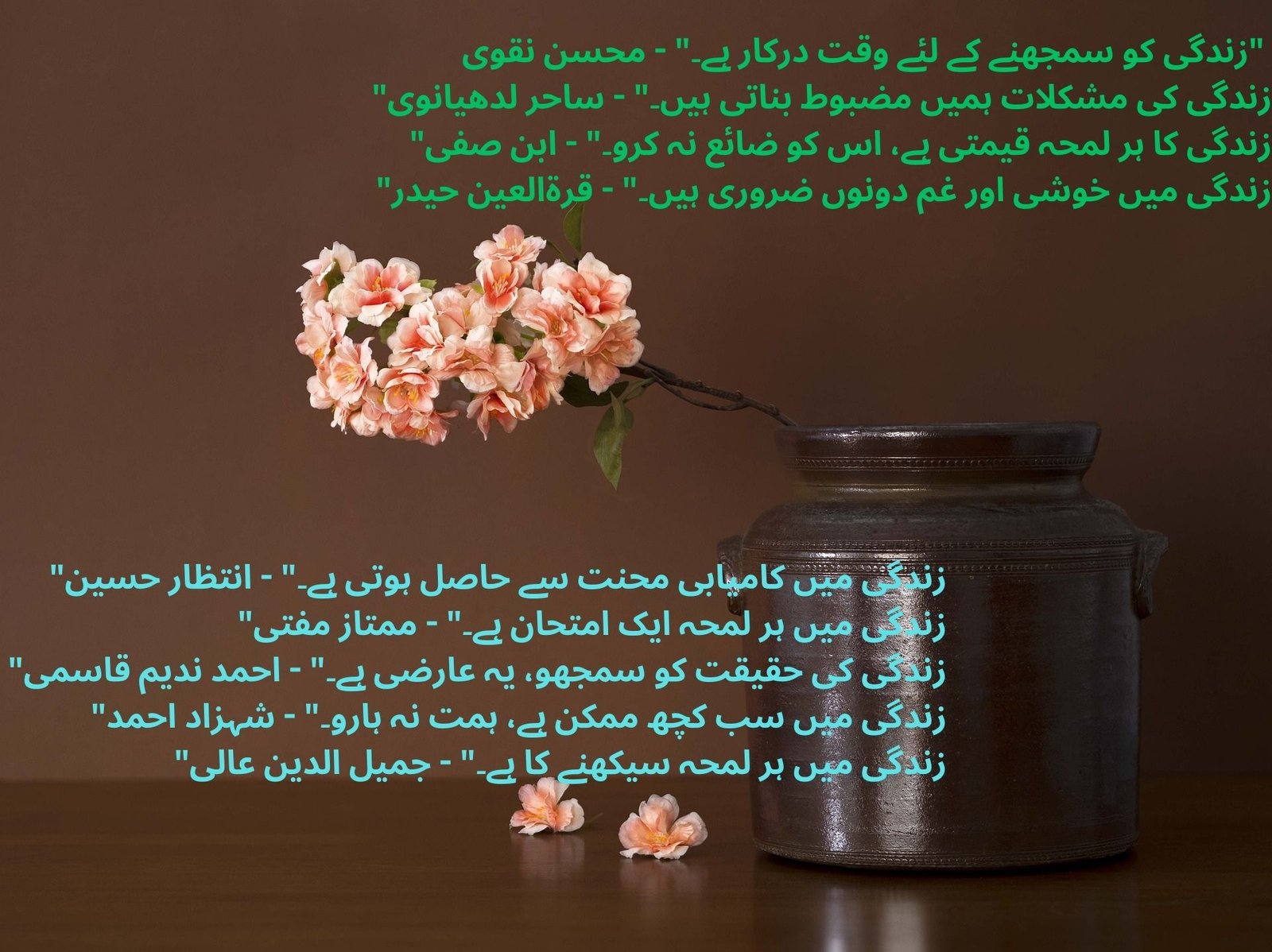
“زندگی کو سمجھنے کے لئے وقت درکار ہے۔” – محسن نقوی
“زندگی کی مشکلات ہمیں مضبوط بناتی ہیں۔” – ساحر لدھیانوی
“زندگی میں محبت سب سے بڑی دولت ہے۔” – محب وطنی
“زندگی کا ہر لمحہ قیمتی ہے، اس کو ضائع نہ کرو۔” – ابن صفی
“زندگی میں خوشی اور غم دونوں ضروری ہیں۔” – قرۃالعین حیدر
“زندگی میں کامیابی محنت سے حاصل ہوتی ہے۔” – انتظار حسین
“زندگی میں ہر لمحہ ایک امتحان ہے۔” – ممتاز مفتی
“زندگی کی حقیقت کو سمجھو، یہ عارضی ہے۔” – احمد ندیم قاسمی
“زندگی میں سب کچھ ممکن ہے، ہمت نہ ہارو۔” – شہزاد احمد
“زندگی میں ہر لمحہ سیکھنے کا ہے۔” – جمیل الدین عالی
Final Thoughts
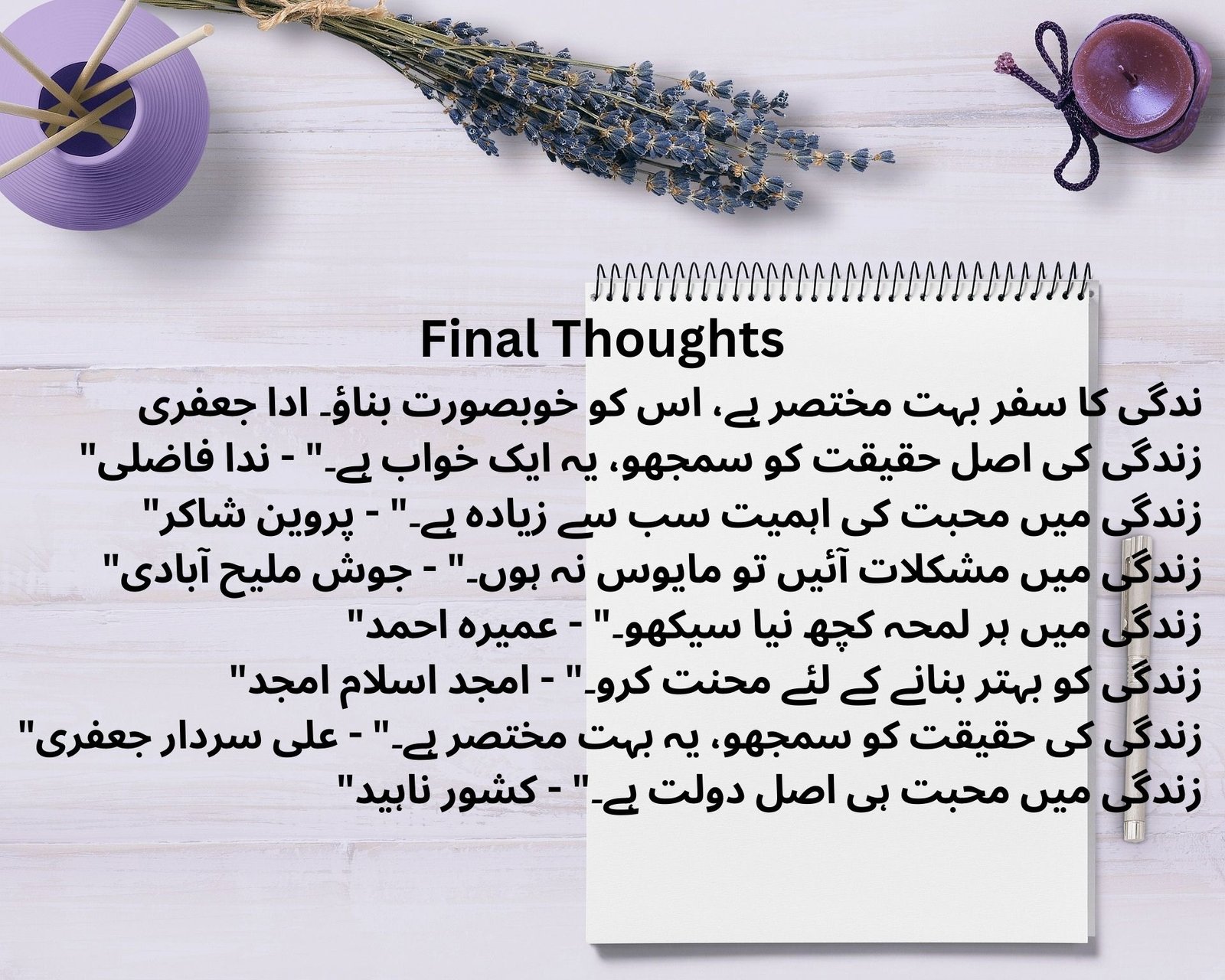
زندگی کا سفر بہت مختصر ہے، اس کو خوبصورت بناؤ۔
ادا جعفری
“زندگی کی اصل حقیقت کو سمجھو، یہ ایک خواب ہے۔” – ندا فاضلی
“زندگی میں محبت کی اہمیت سب سے زیادہ ہے۔” – پروین شاکر
“زندگی میں مشکلات آئیں تو مایوس نہ ہوں۔” – جوش ملیح آبادی
“زندگی میں ہر لمحہ کچھ نیا سیکھو۔” – عمیرہ احمد
“زندگی کو بہتر بنانے کے لئے محنت کرو۔” – امجد اسلام امجد
“زندگی کی حقیقت کو سمجھو، یہ بہت مختصر ہے۔” – علی سردار جعفری
“زندگی میں محبت ہی اصل دولت ہے۔” – کشور ناہید
“زندگی میں مشکلات سے گھبرانا نہیں چاہئے۔” – گلزار
“زندگی میں ہر لمحہ قیمتی ہے، اس کو ضائع نہ کرو۔” – ابن انشا
“زندگی میں ہر لمحہ ایک نیا موقع ہے۔” – فہمیدہ ریاض
“زندگی کو سمجھے بغیر جینا مشکل ہے۔” – حبیب جالب
“زندگی میں ہر لمحہ ایک نیا چیلنج ہے۔” – احمد فراز
“زندگی کو محبت سے گزارو، یہ بہت مختصر ہے۔” – فیض احمد فیض
“زندگی میں کامیابی کے لئے محنت ضروری ہے۔” – جالب
“زندگی میں مشکلات آئیں تو ہمت نہ ہارو۔” – پروین شاکر
“زندگی میں کامیابی محنت سے حاصل ہوتی ہے۔” – انتظار حسین
“زندگی کو بہتر بنانے کے لئے محنت کرو۔” – بانو قدسیہ
“زندگی میں ہر لمحہ سیکھنے کا ہے۔” – جمیل الدین عالی
“زندگی کی حقیقت کو سمجھو، یہ عارضی ہے۔” – ناصر کاظمی
“زندگی میں سب کچھ ممکن ہے، ہمت نہ ہارو۔” – شہزاد احمد
“زندگی میں ہر لمحہ ایک امتحان ہے۔” – ممتاز مفتی
“زندگی کو سمجھنے کے لئے وقت درکار ہے۔” – محسن نقوی
“زندگی کی مشکلات ہمیں مضبوط بناتی ہیں۔” – ساحر لدھیانوی
“زندگی میں محبت سب سے بڑی دولت ہے۔” – محب وطنی
“زندگی کا ہر لمحہ قیمتی ہے، اس کو ضائع نہ کرو۔” – ابن صفی
“زندگی میں خوشی اور غم دونوں ضروری ہیں۔” – قرۃالعین حیدر
“زندگی میں ہر قدم پر سیکھنا ضروری ہے۔” – پروین شاکر
“زندگی محبت کے بغیر کچھ بھی نہیں۔” – احمد فراز
“زندگی کا اصل حسن اس کی ناپائیداری میں ہے۔” – مرزا غالب
تعارف
زندگی ایک پیچیدہ اور متنوع تجربہ ہے جس میں خوشی، غم، کامیابی اور ناکامی سب شامل ہیں۔ ہر انسان کی زندگی کا تجربہ مختلف ہوتا ہے، اور ہر شخص اپنے اپنے طریقے سے زندگی کی حقیقت کو سمجھنے اور اس کا سامنا کرنے کی کوشش کرتا ہے۔ اس حقیقت کو بہتر طور پر سمجھنے کے لئے ہمیں مشہور اردو اقتباسات کی جانب دیکھنے کی ضرورت ہے، جو ہمارے لئے زندگی کے مختلف پہلوؤں کو روشناس کراتے ہیں۔
اردو ادب میں زندگی کی حقیقت پر بہت سے مشہور اقتباسات ملتے ہیں جو انسانی تجربات، احساسات اور جذبات کو بیان کرتے ہیں۔ یہ اقتباسات نہ صرف ہمیں زندگی کی حقیقت کو سمجھنے میں مدد دیتے ہیں بلکہ ہمیں مختلف حالات میں رہنمائی بھی فراہم کرتے ہیں۔ اردو زبان کی خوبصورتی اور اس کی شاعری کی مہارت ان اقتباسات کو اور بھی زیادہ معنی خیز بناتی ہے۔
زندگی کی حقیقت کے بارے میں بات کرنا ضروری ہے کیونکہ یہ ہمیں خود شناسی اور خود فہمی کی طرف لے جاتا ہے۔ زندگی کے مختلف مراحل اور حالات کو سمجھنے کے لئے ہمیں دانشوروں، شاعروں اور مصنفین کی بصیرت کی ضرورت ہوتی ہے۔ مشہور اردو اقتباسات ہمیں زندگی کی پیچیدگیوں کو سمجھنے اور ان سے نمٹنے کا راستہ دکھاتے ہیں۔
ان اقتباسات کی مدد سے ہم زندگی کی حقیقت کے مختلف پہلوؤں کو بہتر طور پر جان سکتے ہیں، جیسے کہ محبت، دوستی، جدوجہد، اور اطمینان۔ یہ اقتباسات ہمیں اس بات کا احساس دلاتے ہیں کہ زندگی کی حقیقت کو سمجھنا کوئی آسان کام نہیں ہے، لیکن یہ ہمیں زندگی کو بہتر طور پر جینے کا حوصلہ اور حکمت عطا کرتے ہیں۔
اقبالیات: علامہ اقبال کے زندگی کے بارے میں خیالات

علامہ محمد اقبال، جو شاعر مشرق کے نام سے بھی معروف ہیں، نے اپنے اشعار اور فلسفے میں زندگی کی حقیقت کو بڑے خوبصورت اور گہرے انداز میں بیان کیا ہے۔ ان کے کلام میں زندگی کی مختلف جہات کا گہرائی سے احاطہ کیا گیا ہے، جو کہ ان کے فلسفیانہ اور فکری مطالعے کا نتیجہ ہے۔ اقبال کے اشعار میں ہمیں زندگی کے مقصد، اس کے چیلنجز اور اس کی خوبصورتی کے حوالے سے کئی اہم نکات ملتے ہیں۔
مثلاً، اقبال کا یہ شعر “خودی کو کر بلند اتنا کہ ہر تقدیر سے پہلے، خدا بندے سے خود پوچھے، بتا تیری رضا کیا ہے” زندگی کی حقیقت اور خودی کی اہمیت کو بیان کرتا ہے۔ اس شعر میں خودی، یعنی خود شناسی اور خود اعتمادی کا فلسفہ بیان کیا گیا ہے، جو انسان کو اس کی تقدیر بدلنے کی طاقت عطا کرتا ہے۔
اسی طرح، اقبال کی شاعری میں ہمیں زندگی کی عارضیت اور اس کے مختصر ہونے کا بھی ذکر ملتا ہے۔ جیسے کہ ان کا مشہور شعر “ستاروں سے آگے جہاں اور بھی ہیں، ابھی عشق کے امتحان اور بھی ہیں” زندگی کی مسلسل جستجو اور ترقی کی ضرورت کو اجاگر کرتا ہے۔ اس شعر میں اقبال نے انسان کو حوصلہ دیا ہے کہ وہ ہمیشہ آگے بڑھنے اور نئے مقاصد کی تلاش میں رہے۔
اقبال کی شاعری میں ہمیں روحانیت کا بھی ایک گہرا پہلو نظر آتا ہے۔ ان کا یہ شعر “کبھی اے حقیقتِ منتظر، نظر آ لباسِ مجاز میں” انسان کی روحانی جستجو اور حقیقت کی تلاش کی عکاسی کرتا ہے۔ اس شعر میں لباسِ مجاز یعنی ظاہری دنیا کے پردوں کے پیچھے چھپی حقیقت کی طرف اشارہ ہے، جو کہ اقبال کے فلسفے کا بنیادی حصہ ہے۔
علامہ اقبال کے اقتباسات اور اشعار میں ہمیں زندگی کی حقیقت کے بارے میں گہرے اور فلسفیانہ نکات ملتے ہیں، جو آج بھی ہمیں زندگی کو بہتر طور پر سمجھنے اور اس کا مقصد تلاش کرنے میں مدد دیتے ہیں۔
مومن خان مومن: زندگی کی حقیقت کے بارے میں خیالات
مومن خان مومن، اردو شاعری کے نمایاں شعرا میں سے ایک ہیں جنہوں نے زندگی کی حقیقت اور اس کے مختلف پہلوؤں کو اپنے اشعار میں بیان کیا ہے۔ ان کے کلام میں زندگی کی پیچیدگیاں، مشکلات اور ان سے نمٹنے کے طریقے واضح طور پر نظر آتے ہیں۔ مومن خان مومن کی شاعری میں انسانی زندگی کی گہرائی اور اس کی حقیقتوں کا بیان بڑی خوبصورتی سے کیا گیا ہے۔
مومن خان مومن کے اشعار میں ہمیں زندگی کی مشکلات اور ان کے حل کے بارے میں گہری بصیرت ملتی ہے۔ ان کے اشعار میں وہ پیغام پوشیدہ ہوتا ہے جو ہمیں زندگی کے نشیب و فراز سے گزرتے وقت حوصلہ دیتا ہے۔ ان کے ایک مشہور شعر میں وہ کہتے ہیں:
“عشق میں ہم تمہیں کیا بتائیں، کیا کیا ہوا
شب گزاری، مگر خواب سہانی نہ ہوئی”
اس شعر میں مومن خان مومن نے زندگی کی مشکلات اور عشق کی پیچیدگیوں کو بڑے خوبصورت انداز میں بیان کیا ہے۔ وہ یہ بتاتے ہیں کہ مشکلات کا سامنا کرنا پڑتا ہے لیکن ہمیں ان کا حوصلے سے سامنا کرنا چاہیے۔
اسی طرح، مومن خان مومن کے ایک اور شعر میں وہ زندگی کی حقیقتوں پر روشنی ڈالتے ہوئے کہتے ہیں:
“زندگی کی حقیقت کو سمجھنا ہے تو
دل کے آئینے میں جھانک لے”
یہ شعر ہمیں یہ درس دیتا ہے کہ زندگی کی حقیقت کو جاننے کے لیے ہمیں اپنے اندر جھانکنا چاہیے اور دل کی گہرائیوں میں چھپے جذبات و احساسات کو سمجھنا چاہیے۔ مومن خان مومن کی شاعری میں ہمیں زندگی کی حقیقتوں کا عمیق اور معنوی بیان ملتا ہے جو ہمیں اپنی زندگی کو بہتر بنانے کی ترغیب دیتا ہے۔
میر تقی میر: حقیقت کی گہرائیوں میں جھانکنا
میر تقی میر، اردو شاعری کے افق پر ایک روشن ستارہ ہیں، جن کے اشعار میں زندگی کی حقیقت کی گہرائیوں میں جھانکنے کی کوشش کی گئی ہے۔ ان کی شاعری نہ صرف فن بلکہ علم و حکمت کا خزانہ بھی ہے۔ میر تقی میر نے انسانی جذبات اور زندگی کی مشکلات کو اس طرح بیان کیا ہے کہ قاری خود کو ان اشعار میں ڈوبتا ہوا محسوس کرتا ہے۔
میر تقی میر کے اشعار میں ایک مخصوص درد اور کسک نمایاں ہے۔ ان کے کلام میں محبت کی ناکامی، زندگی کی بے ثباتی، اور دنیا کی بے وفائی جیسے موضوعات کو بڑی خوبصورتی سے پیش کیا گیا ہے۔ مثلاً ان کا یہ شعر:
“پتا پتا، بوٹا بوٹا، حال ہمارا جانے ہےجانے نہ جانے گل ہی نہ جانے، باغ تو سارا جانے ہے”
ان اشعار میں میر نے انسانی دل کی کیفیت کو ایک باغ کے مناظر کے ذریعے بیان کیا ہے۔ ہر پتا اور بوٹا دل کی حالت سے واقف ہے، لیکن گل یعنی محبت کی علامت اس درد کو نہیں سمجھ پاتی۔ یہ شعر زندگی کی حقیقت اور انسانی جذبات کی گہرائی کو بڑے سلیقے سے پیش کرتا ہے۔
اسی طرح میر کے کئی اور اشعار میں بھی حقیقت کی گہرائیوں کو چھونے کی کوشش کی گئی ہے۔ ان کی شاعری میں زندگی کی مشکلات اور انسانی نفس کے کرب کو اس طرح بیان کیا گیا ہے کہ قاری کو اپنی زندگی کے تجربات کی جھلک دکھائی دیتی ہے۔ میر تقی میر کی شاعری ہمیں اس بات کا احساس دلاتی ہے کہ زندگی کی حقیقت کو سمجھنے کے لیے ہمیں صرف ظاہری حالات پر نہیں بلکہ اندرونی جذبات اور احساسات پر بھی غور کرنا چاہیے۔
غالب: زندگی کی حقیقت کے مختلف پہلو
مرزا غالب، اردو شاعری کے عظیم ستونوں میں سے ایک، نے اپنی شاعری کے ذریعے زندگی کی حقیقت کے مختلف پہلوؤں کو بڑی خوبصورتی سے بیان کیا ہے۔ ان کے اشعار میں زندگی کی تلخیاں، خوشیاں اور تجربات کی عکاسی ملتی ہے۔ ان کی شاعری میں گہرائی اور معنی خیزی کا ایک منفرد انداز پایا جاتا ہے جو قاری کو زندگی کی حقیقتوں پر غور کرنے پر مجبور کرتا ہے۔
غالب کے اشعار میں زندگی کی تلخیاں بڑی شدت سے محسوس کی جاسکتی ہیں۔ ان کی شاعری میں درد اور غم کی عکاسی اس طرح کی گئی ہے کہ قاری خود کو ان کی کیفیت میں مبتلا پاتا ہے۔ غالب کا یہ شعر “دل ہی تو ہے نہ سنگ و خشت، درد سے بھر نہ آئے کیوں” زندگی کی مشکلات اور درد کو خوبصورتی سے بیان کرتا ہے۔ یہاں دل کی نرمی اور دکھ کو پتھر سے تشبیہ دی گئی ہے جو اس بات کی عکاسی کرتی ہے کہ زندگی میں درد اور تکلیفیں ناگزیر ہیں۔
دوسری جانب، غالب کی شاعری میں زندگی کی خوشیوں اور خوبصورتیوں کا بھی ذکر ملتا ہے۔ ان کے الفاظ میں ایک ایسی چاشنی ہے جو قاری کو مسحور کر دیتی ہے۔ “ہزاروں خواہشیں ایسی کہ ہر خواہش پہ دم نکلے” جیسا شعر زندگی کی خوبصورتی اور انسان کی لا محدود خواہشات کا آئینہ دار ہے۔ یہ شعر اس بات کی نشاندہی کرتا ہے کہ خواہشات کی کوئی حد نہیں اور انسان ہمیشہ کچھ نہ کچھ پانے کی جستجو میں رہتا ہے۔
غالب کے اشعار میں زندگی کے تجربات کا بھی خوبصورتی سے ذکر ہے۔ “عمر بھر غالب یہی بھول کرتا رہا، دھول چہرے پہ تھی اور آئینہ صاف کرتا رہا” زندگی کے تجربات اور غلطیوں کو بیان کرتا ہے۔ اس شعر میں غالب نے یہ حقیقت بیان کی ہے کہ انسان اکثر اپنی خامیوں کو دیکھنے میں ناکام رہتا ہے اور دوسروں کو مورد الزام ٹھہراتا ہے۔
احمد فراز: محبت اور زندگی کی حقیقت
احمد فراز کا شمار اردو شاعری کے عظیم شعرا میں ہوتا ہے۔ ان کے اشعار میں محبت اور زندگی کی حقیقتوں کو نہایت خوبصورتی سے پیش کیا گیا ہے۔ فراز کی شاعری میں محبت کی گہرائی اور اس کے پیچیدہ پہلوؤں کا ذکر ملتا ہے، جو قارئین کے دلوں کو چھو لیتے ہیں۔ ان کے اشعار میں محبت کی خوشیوں کے ساتھ ساتھ اس کی مشکلات اور تلخیوں کا بھی ذکر ہوتا ہے۔
احمد فراز کی شاعری میں زندگی کی حقیقتیں بھی نمایاں ہیں۔ وہ زندگی کی مشکلات اور پریشانیوں کو نہایت خوبصورتی سے بیان کرتے ہیں۔ ان کے اشعار میں زندگی کی تلخیوں کے ساتھ ساتھ اس کی خوبصورتی کا بھی ذکر ملتا ہے، جو قارئین کو زندگی کی حقیقتوں کو سمجھنے میں مدد دیتے ہیں۔ فراز کے اشعار میں محبت اور زندگی کی تلخیوں کے باوجود امید اور خوشی کی کرنیں بھی نظر آتی ہیں، جو ان کی شاعری کو اور بھی دلکش بناتی ہیں۔
احمد فراز کی شاعری میں محبت اور زندگی کی حقیقتوں کا بیان نہایت خوبصورت انداز میں کیا گیا ہے۔ ان کے اشعار میں محبت کی گہرائی اور اس کی مشکلات کو نہایت خوبصورتی سے پیش کیا گیا ہے، جو قارئین کے دلوں کو چھو لیتے ہیں۔ فراز کی شاعری میں زندگی کی حقیقتیں بھی نمایاں ہیں، جو قارئین کو زندگی کی مشکلات اور پریشانیوں کو سمجھنے میں مدد دیتی ہیں۔
پروین شاکر: زندگی کی حقیقت اور خواتین کے تجربات
پروین شاکر اردو شاعری میں خواتین کے تجربات اور زندگی کی حقیقت کو بڑے خوبصورت انداز میں بیان کرتی ہیں۔ ان کے اشعار میں نہ صرف معاشرتی مسائل کی عکاسی ہوتی ہے بلکہ زندگی کی مشکلات اور حقیقی تجربات کی عکاسی بھی ہوتی ہے۔ پروین شاکر نے خواتین کے احساسات، جذبات، اور مسائل کو اپنے الفاظ میں یوں پیش کیا کہ قارئین کو ان کی شاعری میں سچائی کی جھلک نظر آتی ہے۔
ان کی شاعری میں خواتین کے تجربات کی مختلف جہتیں ملتی ہیں، جیسے محبت، غم، خوشی، اور جدوجہد۔ پروین شاکر کی شاعری کی ایک مثال ان کے مشہور شعر میں ملتی ہے: “کو بہ کو پھیل گئی بات شناسائی کی، اس نے خوشبو کی طرح میری پذیرائی کی”۔ اس شعر میں انہوں نے خواتین کی محبت اور اس کی قبولیت کی خوبصورتی کو بیان کیا ہے۔
پروین شاکر نے نہ صرف محبت کی خوبصورتی کو بیان کیا بلکہ عورتوں کی مشکلات اور جدوجہد کو بھی اپنی شاعری میں جگہ دی۔ ان کے ایک اور شعر میں ملتا ہے: “خواب مرتے نہیں، خواب دل ہیں نہ آنکھیں نہ سانسیں کہ جو ریزہ ریزہ ہوئے تو بکھر جائیں گے”۔ اس شعر میں انہوں نے عورتوں کی امیدوں اور خوابوں کی پائیداری کو بیان کیا ہے۔
پروین شاکر کی شاعری میں خواتین کے تجربات کی حقیقت کو بڑی سادگی اور گہرائی سے بیان کیا گیا ہے، جو ان کی شعری سفر کا خاصہ ہے۔ ان کے الفاظ میں عورتوں کی زندگی کی سچائی اور مشکلات کی جھلک ملتی ہے، جو قارئین کو متاثر کرتی ہے۔ ان کے اشعار میں زندگی کی حقیقت اور خواتین کے تجربات کو خوبصورتی سے پیش کرنے کی صلاحیت پروین شاکر کی شاعری کو منفرد بناتی ہے۔
اختتامیہ: زندگی کی حقیقت کے مختلف پہلوؤں پر غور
زندگی کی حقیقت کا موضوع اردو ادب میں ہمیشہ سے ایک اہم مقام رکھتا ہے۔ مشہور اردو شعراء نے اپنی شاعری اور نثر میں زندگی کی مختلف جہتوں کو اجاگر کیا ہے، جو نہ صرف ہمارے سوچنے کے انداز کو متاثر کرتی ہے بلکہ ہمیں زندگی کی گہرائیوں میں جھانکنے کا موقع بھی فراہم کرتی ہے۔
کلاسیکی اردو ادب میں، غالب، اقبال، اور میر جیسے شعراء نے زندگی کی حقیقت کو مختلف زاویوں سے بیان کیا ہے۔ غالب کی شاعری میں زندگی کی بےثباتی اور ناپائیداری پر زور دیا گیا ہے۔ وہ زندگی کو ایک خواب اور فریب نظر قرار دیتے ہیں، جو ہمیشہ اپنے انجام کی طرف بڑھتی ہے۔ اقبال کی شاعری میں زندگی کی حقیقت کو ایک جدوجہد اور خودی کی تلاش کے طور پر پیش کیا گیا ہے۔ ان کے نزدیک، زندگی کا مقصد اپنے اندر چھپے ہوئے امکانات کو پہچاننا اور ان کو حقیقت میں تبدیل کرنا ہے۔
میر کی شاعری میں زندگی کی حقیقت کو محبت اور درد کے تجربات کے ذریعے بیان کیا گیا ہے۔ ان کے نزدیک، زندگی کا اصل حسن اس کے دکھ اور سکھ میں پوشیدہ ہے۔ یہ اقتباسات ہمیں یہ سمجھنے میں مدد دیتے ہیں کہ زندگی کی حقیقت کو سمجھنے کے لیے ہمیں اس کے مختلف پہلوؤں کو دیکھنا ہوگا۔
موجودہ دور کے شعراء نے بھی زندگی کی حقیقت کو مختلف انداز میں بیان کیا ہے۔ جدید اردو ادب میں، زندگی کی حقیقت کو سماجی، سیاسی، اور معاشرتی مسائل کے تناظر میں پیش کیا گیا ہے۔ یہ اقتباسات ہمیں اس بات کا احساس دلاتے ہیں کہ زندگی کی حقیقت کو سمجھنے کے لیے ہمیں اپنے اردگرد کے ماحول اور حالات کو بھی دیکھنا ہوگا۔
مختصر یہ کہ، زندگی کی حقیقت کو سمجھنے کے لیے ہمیں مختلف زاویوں سے غور کرنا ہوگا۔ اردو شعراء کے یہ مشہور اقتباسات ہمیں اس سفر میں رہنمائی فراہم کرتے ہیں، اور ہمیں زندگی کی گہرائیوں میں جھانکنے کا موقع دیتے ہیں۔ ان کے ذریعے، ہم زندگی کے مختلف پہلوؤں کو سمجھ سکتے ہیں اور اپنی زندگی کو ایک نئے انداز سے دیکھ سکتے ہیں۔
اے خدا عجب ہے ترا جہاں، مرا دل یہاں پہ لگا نہیں
اے خدا عجب ہے ترا جہاں مرا دل یہاں پہ لگا نہیں
شاعرہ عنبرین حسیب عنبر

شاعرہ عنبرین حسیب عنبر
اے خدا عجب ہے ترا جہاں مرا دل یہاں پہ لگا نہیں
جہاں کوئی اہل وفا نہیں کسی لب پہ حرف دعا نہیں
بڑا شور تھا ترے شہر کا سو گزار آئے ہیں دن وہاں
وہ سکوں کہ جس کی تلاش ہے ترے شہر میں بھی ملا نہیں
یہ جو حشر برپا ہے ہر طرف تو بس اس کا ہے یہی اک سبب
ہے لبوں پہ نام خدا مگر کسی دل میں خوف خدا نہیں
جو ہنسی ہے لب پہ سجی ہوئی تو یہ صرف ضبط کا فرق ہے
مرے دل میں بھی وہی زخم ہیں مرا حال تجھ سے جدا نہیں
یہ جو دشت دل میں ہیں رونقیں یہ تری عطا کے طفیل ہیں
دیا زخم جو وہ ہرا رہا جو دیا جلا وہ بجھا نہیں
اے خدا عجب ہے تری رضا کوئی بھید اس کا نہ پا سکا
کہ ملا تو مل گیا بے طلب جسے مانگتے تھے ملا نہیں
وہ جو حرف حق تھا لکھا گیا کسی شام خون سے ریت پر
ہے گواہ موجۂ وقت بھی کہ وہ حرف اس سے مٹا نہیں
تعارف
انسانی دل ہمیشہ سے ایک پر اسرار اور پیچیدہ عضو رہا ہے، جو نہ صرف جسمانی بلکہ جذباتی اور روحانی طور پر بھی ہمارے وجود کا مرکز ہے۔ جب ہم انسانی دل کی بے چینی اور خدا کی دنیا کی عجیب و غریب حقیقتوں کی بات کرتے ہیں، تو ہم ایک ایسے موضوع پر بات کر رہے ہوتے ہیں جو صدیوں سے فلسفیوں، شاعروں، اور دانشوروں کی توجہ کا مرکز رہا ہے۔ یہ بلاگ پوسٹ انسانی جذبات، روحانی تلاش، اور دنیاوی معاملات پر غور و فکر پر مبنی ہے، اور اس کا مقصد ہے کہ ہم اس پیچیدہ موضوع کو بہتر طور پر سمجھ سکیں۔ مزید اقتباسات اور شاعری کے لیے یہاں کلک کریں۔
خدا کی دنیا بے شمار رنگوں، شکلوں، اور احساسات سے بھری ہوئی ہے۔ یہاں ہر چیز اپنی جگہ پر ایک خاص مقصد اور معنی رکھتی ہے، لیکن انسانی دل کو اکثر اس دنیا میں اپنی جگہ یا سکون نہیں ملتا۔ یہی وہ بے چینی ہے جو ہمیں روحانی سفر پر لے جاتی ہے، جہاں ہم خدا کی حقیقتوں کو جاننے کی کوشش کرتے ہیں۔
انسانی جذبات کا دائرہ بہت وسیع ہے، اور ہر انسان کی زندگی میں مختلف جذبات کا تجربہ ہوتا ہے۔ کبھی یہ خوشی اور مسرت کا باعث بنتے ہیں، تو کبھی غم اور مایوسی کا۔ اس جذباتی جدو جہد میں، انسانی دل خدا کی تلاش میں نکل پڑتا ہے، جس میں اسے سکون اور اطمینان کی امید ہوتی ہے۔
اس بلاگ پوسٹ کا مقصد یہ ہے کہ ہم انسانی دل کی بے چینی اور خدا کی دنیا کی عجیب و غریب حقیقتوں پر غور کریں، اور اس عمل میں ہم اپنی زندگی کے مختلف پہلوؤں کو بہتر طور پر سمجھ سکیں۔
خدا کی عجیب دنیا
خدا کی تخلیق کردہ دنیا کی خوبصورتی اور پیچیدگیوں پر غور کرتے ہوئے، ہمیں یہ احساس ہوتا ہے کہ ہر چیز میں ایک منفرد نوعیت ہے، جو اس کے خالق کی عظمت کی گواہی دیتی ہے۔ یہ دنیا حیرت انگیز ہے، جہاں ہر چیز اپنے آپ میں مکمل اور مختلف ہے، لیکن ایک ہم آہنگی اور توازن میں جڑی ہوئی ہے۔
قدرتی مناظر سے لے کر جانداروں کی ساخت تک، ہر چیز میں خدا کی حکمت اور تخلیقی صلاحیتوں کی جھلک نظر آتی ہے۔ پہاڑوں کی بلندی، سمندروں کی گہرائی، جنگلوں کا سکون اور صحراؤں کی وسعت، یہ سب کچھ ایک ایسی دنیا کی عکاسی کرتے ہیں جو بظاہر تو مختلف ہے، لیکن اس میں ایک قدرتی توازن اور ہم آہنگی پائی جاتی ہے۔
جانداروں کی بات کی جائے تو ان کی ساخت، عادات اور زندگی کے طریقے بھی حیران کن ہیں۔ مختلف اقسام کے پودے، جانور اور پرندے نہ صرف اپنی نوعیت میں مختلف ہیں بلکہ اپنی بقا کے لئے مختلف حکمت عملیوں کا استعمال کرتے ہیں۔ خدا کی تخلیق کردہ ہر جاندار میں ایک خاصیت ہے جو اسے دوسرے سے ممتاز کرتی ہے، لیکن وہ سب ایک مشترکہ نظام کا حصہ ہیں۔
یہی توازن اور ہم آہنگی انسانی دنیا میں بھی نظر آتی ہے۔ انسان اپنے آپ میں ایک منفرد مخلوق ہے، جسے خدا نے عقل، شعور اور اختیار عطا کیا ہے۔ انسانوں کے درمیان مختلف ثقافتیں، زبانیں اور روایات ہونے کے باوجود، وہ سب ایک معاشرتی نظام کا حصہ ہیں، جو ہم سب کو ایک دوسرے سے مربوط رکھتا ہے۔
خدا کی دنیا کی یہ عجیب خوبصورتی اور پیچیدگیاں ہمیں نہ صرف حیران کرتی ہیں بلکہ ہمیں اپنی زندگی میں بھی توازن اور ہم آہنگی کی اہمیت کا احساس دلاتی ہیں۔ یہ دنیا واقعی ایک عجب ہے، جہاں ہر چیز اپنے مقام پر ہے اور سب کچھ مل کر ایک مکمل تصویر بناتا ہے۔
دل کی بے چینی
انسانی دل کی بے چینی ایک ایسی کیفیت ہے جو اکثر لوگوں کو درپیش رہتی ہے۔ یہ بے چینی اور اضطراب مختلف عوامل کی بنا پر پیدا ہوسکتی ہے، جیسے کہ دنیاوی مسائل، روزمرہ کے معاملات، اور غیر یقینی حالات۔ دل کو سکون اور اطمینان نہ ملنے کی ایک بڑی وجہ یہ ہے کہ انسان کی خواہشات اور توقعات لامحدود ہوتی ہیں، جبکہ دنیا کی حقیقتیں اور وسائل محدود ہیں۔
بے چینی کے اسباب میں سے ایک یہ بھی ہے کہ انسان کا دل اپنے خالق سے بے حد وابستہ ہوتا ہے۔ جب انسان دنیاوی معاملات میں زیادہ مگن ہوجاتا ہے اور اپنے خالق کی یاد سے دور ہوجاتا ہے، تو اس کا دل بے چینی اور اضطراب کی کیفیت میں مبتلا ہوجاتا ہے۔ دنیاوی معاملات کی ایک اور خصوصیت یہ ہے کہ یہ ہمیشہ تبدیل ہوتے رہتے ہیں، اور انسان کی زندگی میں مستقل مزاجی کی کمی ہوتی ہے۔ اس تبدیلی اور غیر یقینی کی حالت میں انسان کو سکون اور اطمینان نہیں ملتا۔
دل کی بے چینی کی ایک اور وجہ یہ بھی ہوسکتی ہے کہ انسان اپنی زندگی کے مقصد کو بھول جاتا ہے۔ جب انسان اپنی زندگی کو صرف دنیاوی کامیابیوں اور مادی لذتوں تک محدود کرلیتا ہے، تو اس کا دل ہمیشہ ایک خالی پن محسوس کرتا ہے۔ یہ خالی پن اس وقت پیدا ہوتا ہے جب انسان اپنی روحانی ضرورتوں کو نظر انداز کردیتا ہے اور صرف دنیاوی لذتوں پر توجہ مرکوز کرتا ہے۔
دل کی بے چینی کو کم کرنے کے لئے ضروری ہے کہ انسان اپنے خالق کی یاد کو اپنی زندگی میں شامل کرے اور روحانی سکون کی تلاش کرے۔ اس کے علاوہ، زندگی کے مقاصد کو سمجھنا اور ان پر عمل پیرا ہونا بھی دل کے سکون کے لئے بہت اہم ہے۔ جب انسان اپنی زندگی کے مقصد کو پہچانتا ہے اور اس پر عمل کرتا ہے تو اس کا دل سکون پاتا ہے اور بے چینی کی کیفیت سے نجات ملتی ہے۔
روحانی تلاش
روحانی تلاش انسان کی زندگی میں ایک اہم مقام رکھتی ہے۔ یہ وہ سفر ہے جو انسان کو خدا کی قربت کی جستجو میں لے جاتا ہے، اور اسے اندرونی سکون اور اطمینان فراہم کرتا ہے۔ روحانی تلاش کا آغاز اس وقت ہوتا ہے جب انسان دنیاوی معاملات سے دور ہو کر اپنے اندر جھانکنے کی کوشش کرتا ہے۔ یہ ایک گہرائی سے بھرا ہوا عمل ہے جس میں انسان اپنی روح کی اصل حقیقت کو جاننے کی کوشش کرتا ہے۔
انسان کی روحانی طلب اسے مختلف راستوں پر لے جا سکتی ہے۔ کچھ لوگوں کے لیے یہ عبادت اور مراقبہ کے ذریعے حاصل ہوتا ہے، جبکہ کچھ لوگ قدرتی مناظر میں خدا کی نشانیوں کو تلاش کرتے ہیں۔ ہر انسان کے لیے روحانی تلاش کا راستہ مختلف ہو سکتا ہے، لیکن اس کا مقصد ایک ہی ہوتا ہے: خدا کی قربت اور اندرونی سکون۔
روحانی تلاش کا سفر آسان نہیں ہوتا۔ اس میں مشکلات اور چیلنجز کا سامنا کرنا پڑتا ہے، لیکن جو لوگ اس سفر پر ثابت قدم رہتے ہیں، وہ ایک نئی روشنی اور اطمینان پاتے ہیں۔ یہ سفر انسان کو اپنی ذات کے حقیقی معنوں سے آشنا کرتا ہے اور اسے ایک نئی زندگی کی جانب لے جاتا ہے۔
روحانی تلاش کے دوران، انسان کو اپنی غلطیوں اور کمزوریوں کا سامنا کرنا پڑتا ہے۔ لیکن یہ وہ لمحے ہوتے ہیں جو انسان کو مزید مضبوط اور مستحکم بناتے ہیں۔ خدا کی قربت کی جستجو انسان کو ایک نئی زندگی کی جانب لے جاتی ہے جہاں وہ دنیاوی مسائل سے بالاتر ہو کر ایک نئی روحانی دنیا میں داخل ہوتا ہے۔
اس طرح، روحانی تلاش انسان کو اندرونی سکون اور اطمینان فراہم کرتی ہے جو کہ دنیا کے کسی بھی چیز سے زیادہ قیمتی ہے۔ خدا کی قربت کی جستجو انسان کو ایک نئی زندگی کی روشنی سے منور کرتی ہے اور اسے ایک نئے راستے پر گامزن کرتی ہے۔
دنیاوی معاملات
دنیاوی معاملات کی پیچیدگیوں کو سمجھنا ایک انسان کے لیے ضروری ہے تاکہ وہ اپنی زندگی میں سکون اور اطمینان حاصل کر سکے۔ آج کے دور میں، دنیاوی معاملات نہ صرف روزمرہ کی زندگی کو متاثر کرتے ہیں بلکہ انسان کی ذہنی اور جذباتی حالت پر بھی گہرا اثر ڈالتے ہیں۔ مالی مسائل، انسانی تعلقات، اور معاشرتی ذمہ داریاں ایسی چند مثالیں ہیں جو دنیاوی معاملات کا حصہ ہیں اور انسان کو پریشان کرتے ہیں۔
مالی مسائل اکثر لوگوں کے لیے ایک بڑا چیلنج ہوتے ہیں۔ قرضے، بڑھتی ہوئی قیمتیں، اور محدود آمدنی جیسے مسائل انسان کو بے چینی کا شکار بنا دیتے ہیں۔ ان مسائل کا حل تلاش کرنا وقت اور محنت طلب ہوتا ہے، مگر یہ ممکن ہے۔ بہتر مالی منصوبہ بندی، بچت کی عادات، اور غیر ضروری اخراجات پر قابو پانے سے مالی مسائل کو کم کیا جا سکتا ہے۔
انسانی تعلقات بھی دنیاوی معاملات کا ایک اہم حصہ ہیں۔ بعض اوقات انسان اپنے پیاروں کے ساتھ تعلقات میں پیچیدگیوں کا سامنا کرتا ہے۔ یہ مسائل جذباتی تناؤ، غلط فہمیوں، اور عدم اعتماد کا سبب بن سکتے ہیں۔ ان مسائل کے حل کے لیے کھلی بات چیت، ایک دوسرے کی بات سننے اور سمجھنے کی کوشش، اور معافی دینے کی اہمیت کو سمجھنا ضروری ہے۔
اسی طرح، معاشرتی ذمہ داریاں بھی دنیاوی معاملات میں شامل ہیں۔ ایک فرد کو اپنی کمیونٹی، خاندان، اور دوستوں کے ساتھ متوازن تعلقات قائم کرنے ہوتے ہیں۔ اس کے علاوہ، پیشہ ورانہ زندگی کی ذمہ داریاں بھی انسان کے لیے چیلنج بن سکتی ہیں۔ بہتر تنظیمی صلاحیتیں، وقت کی منصوبہ بندی، اور خود کی دیکھ بھال پر توجہ دینے سے ان ذمہ داریوں کو سنبھالنے میں مدد مل سکتی ہے۔
دنیاوی معاملات کی پیچیدگیوں کو سمجھ کر اور ان کے حل تلاش کر کے انسان اپنی زندگی کو بہتر بنا سکتا ہے۔ ان مسائل کا سامنا کرنا اور ان پر قابو پانا ایک مسلسل عمل ہے، جو فرد کو مضبوط اور مستحکم بناتا ہے۔
خدا کی قربت کی اہمیت
خدا کی قربت کی اہمیت ایک ایسی حقیقت ہے جو انسان کی زندگی میں گہرائی تک اثر انداز ہوتی ہے۔ جب کوئی شخص خدا کے قریب ہوتا ہے، تو اسے ایک اندرونی سکون اور اطمینان حاصل ہوتا ہے جو دنیاوی معاملات سے بڑھ کر ہوتا ہے۔ یہ سکون نہ صرف دل و دماغ کو راحت بخشتا ہے بلکہ زندگی کے مختلف پہلوؤں میں بھی مثبت تبدیلیاں لاتا ہے۔
خدا کی قربت کے ذریعے انسان کو یہ احساس ہوتا ہے کہ وہ اکیلا نہیں ہے، بلکہ ایک اعلیٰ طاقت اس کے ساتھ ہے۔ یہ احساس انسان کو مشکلات کا سامنا کرنے میں مدد فراہم کرتا ہے اور اسے زندگی کی آزمائشوں سے لڑنے کی طاقت دیتا ہے۔ جب کوئی شخص خدا کے قریب ہوتا ہے، تو اس کی زندگی میں ایک نیا معنٰی اور مقصد پیدا ہوتا ہے۔
خدا کی قربت انسان کو نہ صرف روحانی بلکہ جسمانی اور ذہنی سکون بھی فراہم کرتی ہے۔ یہ سکون اس کے دل میں ایک نئی روشنی اور امید پیدا کرتا ہے، جو اس کی زندگی میں خوشی اور اطمینان کا باعث بنتا ہے۔ خدا کی قربت انسان کی زندگی میں ایک مثبت تبدیلی لاتی ہے، جو اس کے اعمال اور رویے میں بھی نظر آتی ہے۔
خدا کی قربت کا ایک اور اہم پہلو یہ ہے کہ یہ انسان کو اخلاقی اقدار اور اصولوں کی پیروی کرنے کی ترغیب دیتی ہے۔ یہ قربت انسان کو صحیح اور غلط کی تمیز کرنے کی صلاحیت عطا کرتی ہے اور اسے ایک بہتر انسان بننے میں مدد فراہم کرتی ہے۔ اس طرح، خدا کی قربت انسان کی زندگی کو ایک نئی جہت اور ایک نیا مقصد فراہم کرتی ہے، جو اسے دنیاوی معاملات سے بڑھ کر ایک اعلیٰ مقصد کی طرف لے جاتی ہے۔
سکون کی تلاش
سکون کی تلاش انسانی زندگی کا ایک اہم پہلو ہے جو ہر فرد کے لئے مختلف ہوسکتا ہے۔ کوئی شخص کتابوں کی دنیا میں سکون پاتا ہے تو کوئی قدرتی مناظر میں۔ سکون حاصل کرنے کے لیے مختلف طریقے اپنائے جا سکتے ہیں جو ہر فرد کی شخصی پسند اور ضرورت کے مطابق ہوتے ہیں۔
ایک عام طریقہ جسے لوگ سکون حاصل کرنے کے لیے اپناتے ہیں وہ ہے مراقبہ۔ مراقبہ ذہنی سکون اور جذباتی توازن کو بڑھانے میں مددگار ثابت ہوتا ہے۔ چند منٹوں کے لئے روزانہ مراقبہ کرنے سے ذہنی دباؤ کم ہوتا ہے اور ذہن کو آرام ملتا ہے۔
ورزش بھی سکون حاصل کرنے کا ایک مؤثر طریقہ ہے۔ جسمانی سرگرمی نہ صرف جسمانی صحت کو بہتر بناتی ہے بلکہ ذہنی صحت پر بھی مثبت اثر ڈالتی ہے۔ ورزش کرنے سے دماغ میں اینڈورفنز کی سطح بڑھتی ہے جو کہ خوشی کے ہارمونز کہلاتے ہیں، ان سے انسان خود کو زیادہ خوش اور پرسکون محسوس کرتا ہے۔
سکون کی تلاش میں موسیقی بھی ایک اہم کردار ادا کر سکتی ہے۔ مختلف قسم کی موسیقی سننے سے جذباتی حالت میں تبدیلی آ سکتی ہے۔ آرام دہ اور پرسکون موسیقی سننے سے ذہنی سکون ملتا ہے اور دل کی دھڑکن معمول پر آ جاتی ہے۔
قدرتی مناظر اور فطرت کے قریب وقت گزارنا بھی سکون حاصل کرنے کا ایک بہترین طریقہ ہے۔ کھلی ہوا میں چہل قدمی کرنا، پہاڑوں کی خوبصورتی دیکھنا، یا سمندر کی لہروں کی آواز سننا دل کو سکون بخشتا ہے۔ فطرت کے قریب ہونے سے انسان کو اپنے آپ سے جڑنے کا موقع ملتا ہے جو کہ زندگی کے توازن کو بہتر بنانے میں مددگار ہوتا ہے۔
نتیجتاً، سکون کی تلاش کے مختلف طریقے ہیں جو ہر فرد کی شخصی ضروریات اور ترجیحات کے مطابق ہوتے ہیں۔ ان طریقوں کو اپنانے سے نہ صرف سکون ملتا ہے بلکہ زندگی میں توازن بھی پیدا ہوتا ہے۔
نتیجہ
خدا کی دنیا کی عجیب و غریب حقیقتیں اور انسانی دل کی بے چینی ایک دوسرے سے گہرا تعلق رکھتی ہیں۔ اس دنیا کی پیچیدگیاں اور اسرار انسانی فطرت کو ہمیشہ سوالوں میں مبتلا رکھتے ہیں۔ ہر انسان اپنی زندگی کے سفر میں کئی مراحل سے گزرتا ہے جہاں وہ مختلف تجربات اور چیلنجز کا سامنا کرتا ہے۔ ان تجربات کے دوران، اکثر اوقات دل میں ایک نہ ختم ہونے والی بے چینی اور بے قراری جنم لیتی ہے۔ یہ بے چینی کسی بھی مادی چیز یا دنیاوی کامیابی سے ختم نہیں ہو سکتی۔
خدا کی قربت اور روحانی تلاش انسان کو اندرونی سکون فراہم کر سکتی ہے۔ جب انسان اپنے اندر جھانکتا ہے اور خدا کی موجودگی کو محسوس کرتا ہے، تو اسے ایک انوکھا سکون اور اطمینان نصیب ہوتا ہے۔ یہ سکون اس بات کی تصدیق کرتا ہے کہ زندگی میں حقیقی خوشی اور اطمینان خدا کی قربت میں ہے۔ روحانی تلاش کا یہ سفر انسان کو اس کی اصل حقیقت سے روشناس کراتا ہے اور اسے یہ سمجھنے میں مدد دیتا ہے کہ مادی دنیا کی چیزیں عارضی ہیں جبکہ خدا کی محبت اور قربت دائمی ہے۔
لہذا، انسانی دل کی بے چینی کو ختم کرنے کے لئے روحانی سفر کی ضرورت ہے۔ اس سفر کے دوران، انسان اپنے اندرونی مسائل اور الجھنوں کا حل خدا کی قربت میں پاتا ہے۔ یہ ایک مسلسل عمل ہے جو انسان کو اپنی زندگی میں معنی اور مقصد فراہم کرتا ہے۔ اس طرح کی روحانی تلاش نہ صرف دل کی بے چینی کو ختم کرتی ہے بلکہ انسان کو زندگی کے حقیقی معنی اور مقصد سے بھی روشناس کراتی ہے۔
Chalo Ab Aisa Karty hain Sitary Baant Laity Hain by Faiz Ahmed Faiz
شاعر: فیض احمد فیض
چلو اب ایسا کرتے ہیں ستارے بانٹ لیتے ہیں۔
ضرورت کے مطابق ہم سہارے بانٹ لیتے ییں۔
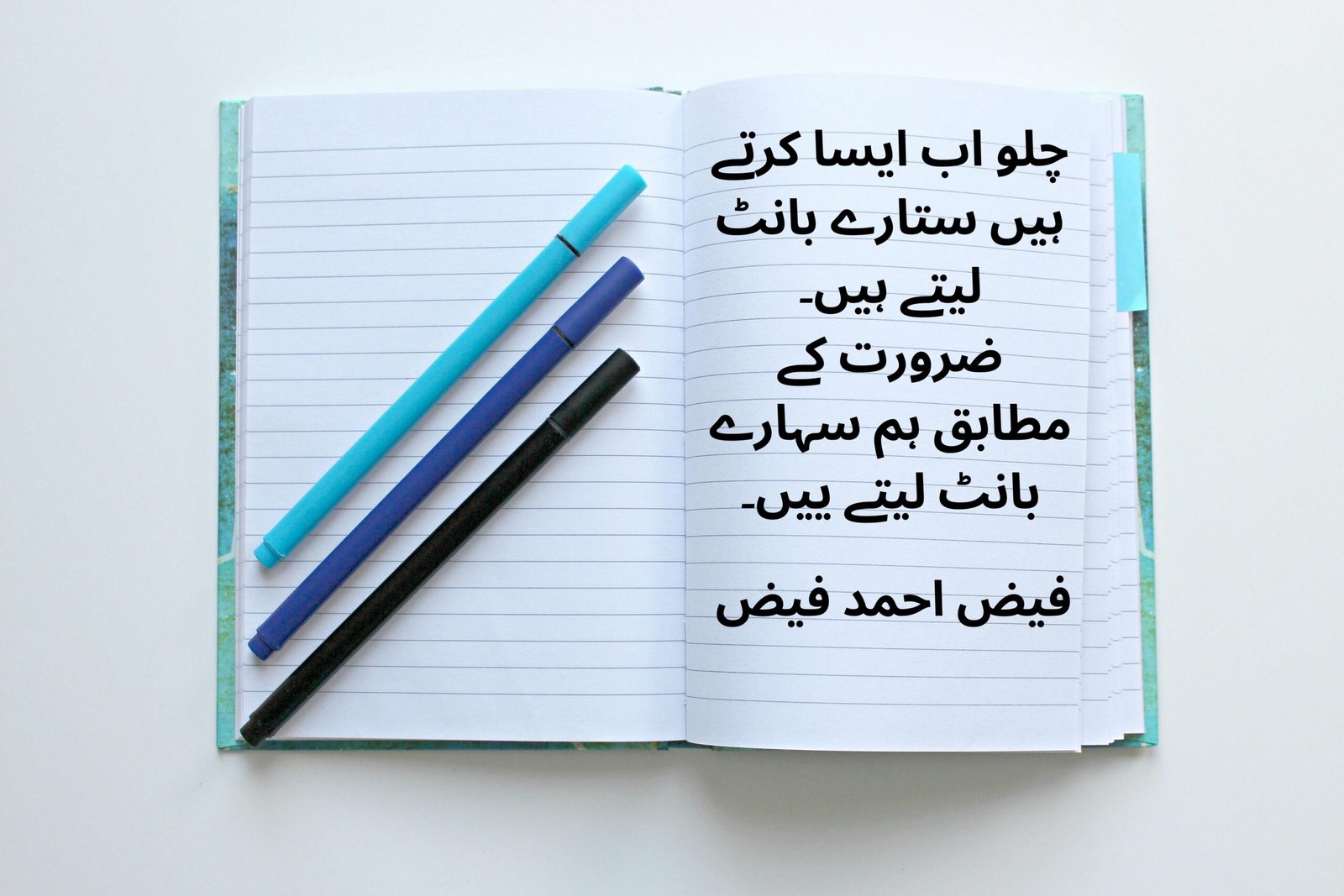
محبت کرنے والوں کی تجارت بھی انوکھی ہے
منافع چھوڑ دیتے ہیں خسارے بانٹ لیتے ہیں۔
اگر ملنا نہیں ممکن تو لہروں پر قدم رکھ کر
ابھی دریائے الفت کے کنارے بانٹ لیتے ہیں۔
میری جھولی میں جتنے بھی وفا کے پھول ہیں ان کو
اکٹھے بیٹھ کر سارے کے سارے بانٹ لیتے ہیں۔
محبت کے علاوہ پاس اپنے کچھ نہیں ہے فیض
اسی دولت کو ہم قسمت کے مارے بانٹ لیتے ہیں
Chalo ab aisa karte hain sitaary baant lete hain.
Zarurat k mutabiq hum sahary baant lety hain.
Agar amilna nahin mumkin to Lehron per qadam rakh kar,
Abhi darya-e ulfat k kinaary baant lety hain.
Mohabat karne walon ki tijaarat bhi anokhi ha, Munaafa chhor dety hain khasaary baant lety hain.
Meri Jholi mein jitne bhi wafa k phool hain unko,
Ikathay beth kar saary k saary baant lety hain.
Mohabat k ilawa pass apne kuchh nahin ab to
Issi dolat ko Hum qismat k maary bant lety hain.
FAIZ AHMAD FAIZ
10 Weather Quotes That Will Make You Smile
Beautiful Weather Quotes
Weather is not just a phenomenon; it’s a kaleidoscope of emotions painted across the canvas of the sky. From the warm embrace of sunshine to the soothing melody of raindrops, each weather condition carries its own charm and significance. Here are ten beautiful quotes that capture the essence of weather in all its glory.
-
“Sunshine is delicious, rain is refreshing, wind braces us up, snow is exhilarating; there is really no such thing as bad weather, only different kinds of good weather.” – John Ruskin
John Ruskin beautifully encapsulates the idea that every weather condition has its own unique appeal. Instead of categorizing weather as good or bad, he invites us to appreciate its diversity and find joy in its variations.
-
“The sun always shines above the clouds.” – Paul F. Davis
This quote serves as a reminder that no matter how dark and gloomy life may seem, there is always a ray of hope shining brightly above the clouds of adversity. It inspires us to remain optimistic and look for the silver lining in every situation.
-
“Some people walk in the rain, others just get wet.” – Roger Miller
Roger Miller’s words carry a profound message about perspective and attitude. While some may see rain as an inconvenience, others see it as an opportunity to dance in its rhythm and find joy amidst the downpour.
-
“A change in the weather is sufficient to recreate the world and ourselves.” – Marcel Proust
Marcel Proust highlights the transformative power of weather. Just as the weather undergoes constant change, so do we. Every shift in weather patterns offers us a chance for renewal and self-discovery.
-
“The best thing one can do when it’s raining is to let it rain.” – Henry Wadsworth Longfellow
Longfellow’s quote teaches us the importance of acceptance and surrendering to the natural course of events. Instead of resisting the rain, we should embrace it and allow it to nourish the earth and our souls.
-
“There is no such thing as bad weather, only inappropriate clothing.” – Sir Ranulph Fiennes
Sir Ranulph Fiennes’ witty remark underscores the significance of preparedness and adaptability. By dressing appropriately for the weather, we can enjoy the outdoors regardless of the conditions, turning every moment into an adventure.
-
“Rain is grace; rain is the sky descending to the earth; without rain, there would be no life.” – John Updike
John Updike poetically portrays rain as a divine gift that sustains life on earth. His quote reminds us to be grateful for the blessings of nature, including the life-giving nourishment provided by rainfall.
-
“I am sure it is a great mistake always to know enough to go in when it rains. One may keep snug and dry by such knowledge, but one misses a world of loveliness.” – Adeline Knapp
Adeline Knapp’s words urge us to embrace the beauty of rain instead of seeking shelter at the first sign of precipitation. By venturing out into the rain, we open ourselves up to new experiences and moments of wonder.
-
“The sun is a daily reminder that we too can rise again from the darkness, that we too can shine our own light.” – S. Ajna
S. Ajna’s quote draws a parallel between the rising sun and the resilience of the human spirit. Just as the sun emerges victorious from the darkness of night, we too have the power to overcome challenges and illuminate the world with our presence.
-
“Clouds come floating into my life, no longer to carry rain or usher storm, but to add color to my sunset sky.” – Rabindranath Tagore





























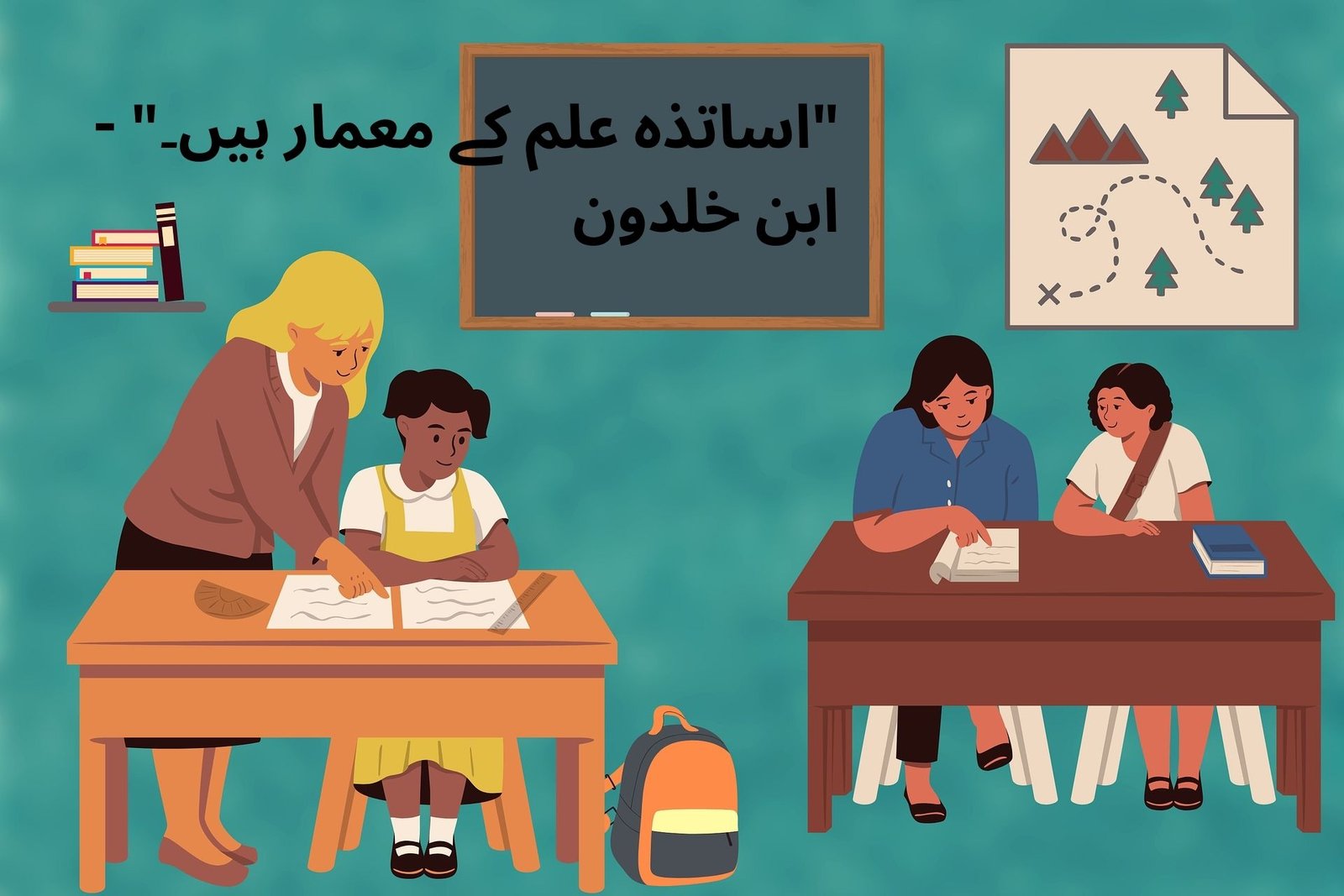
















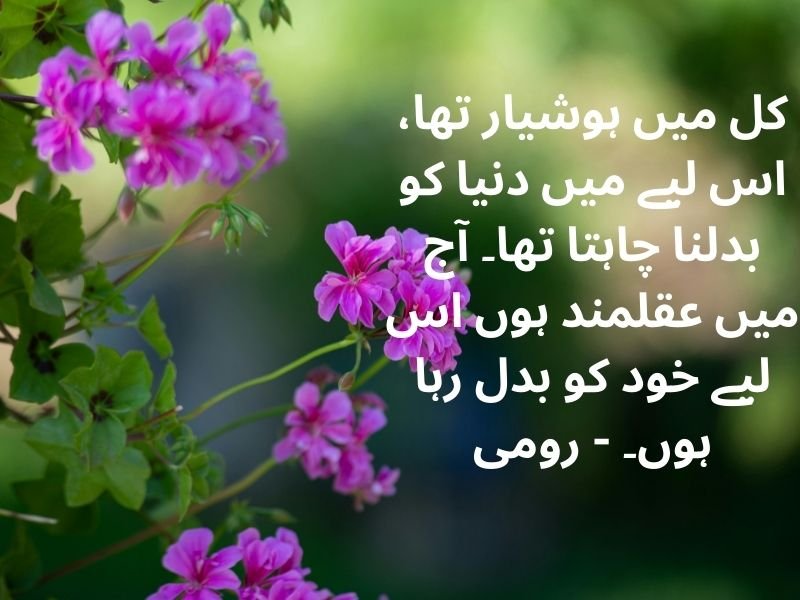


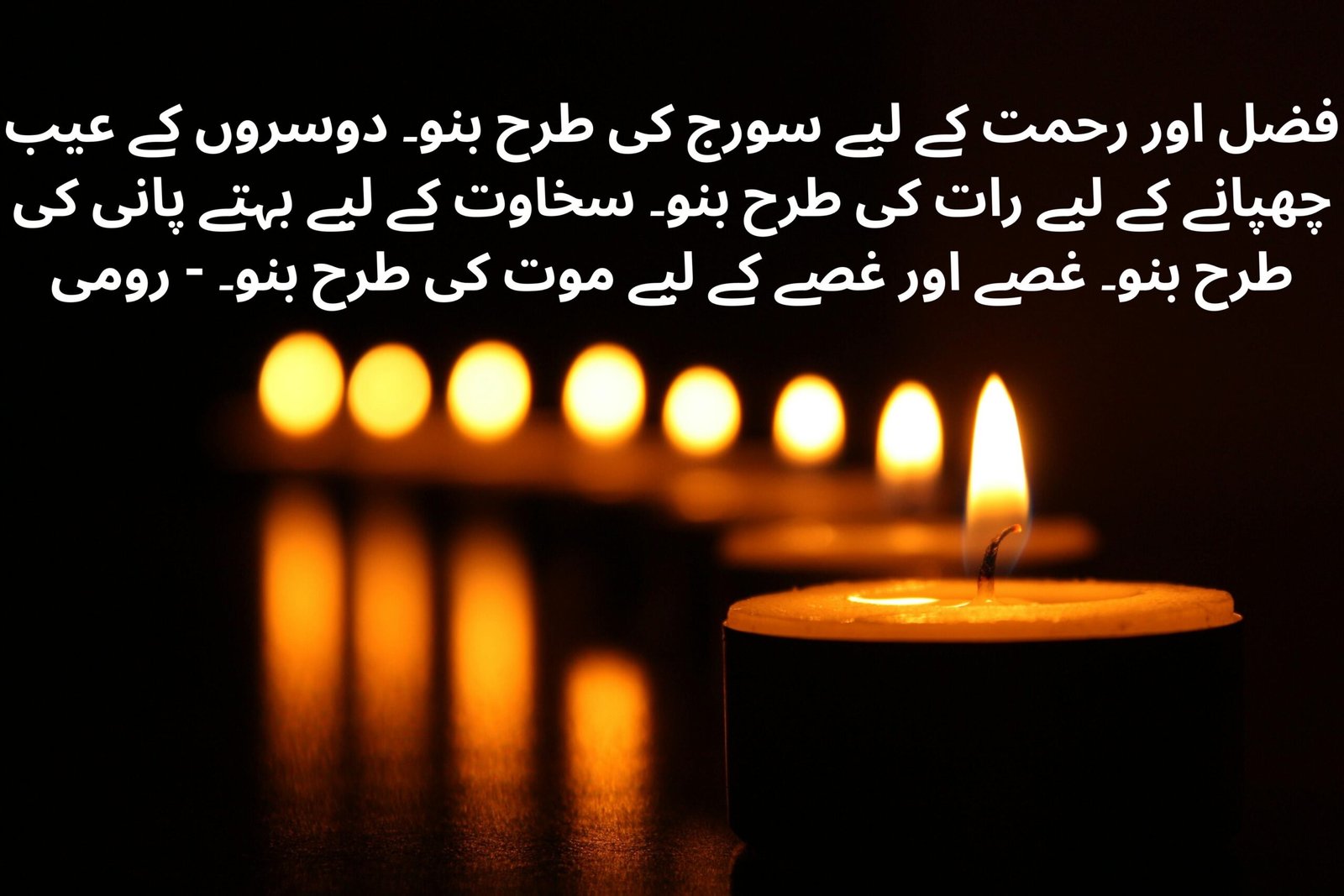

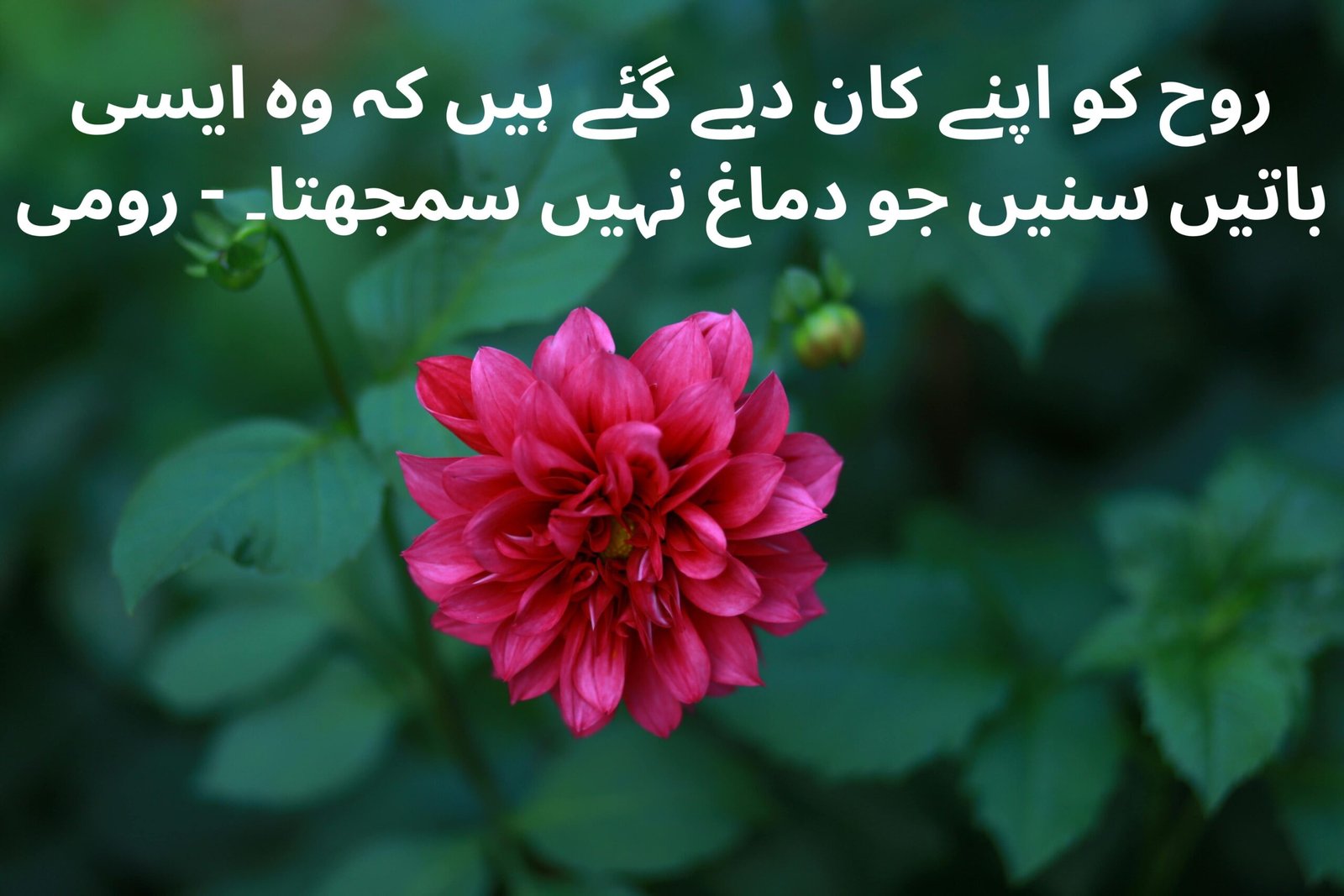
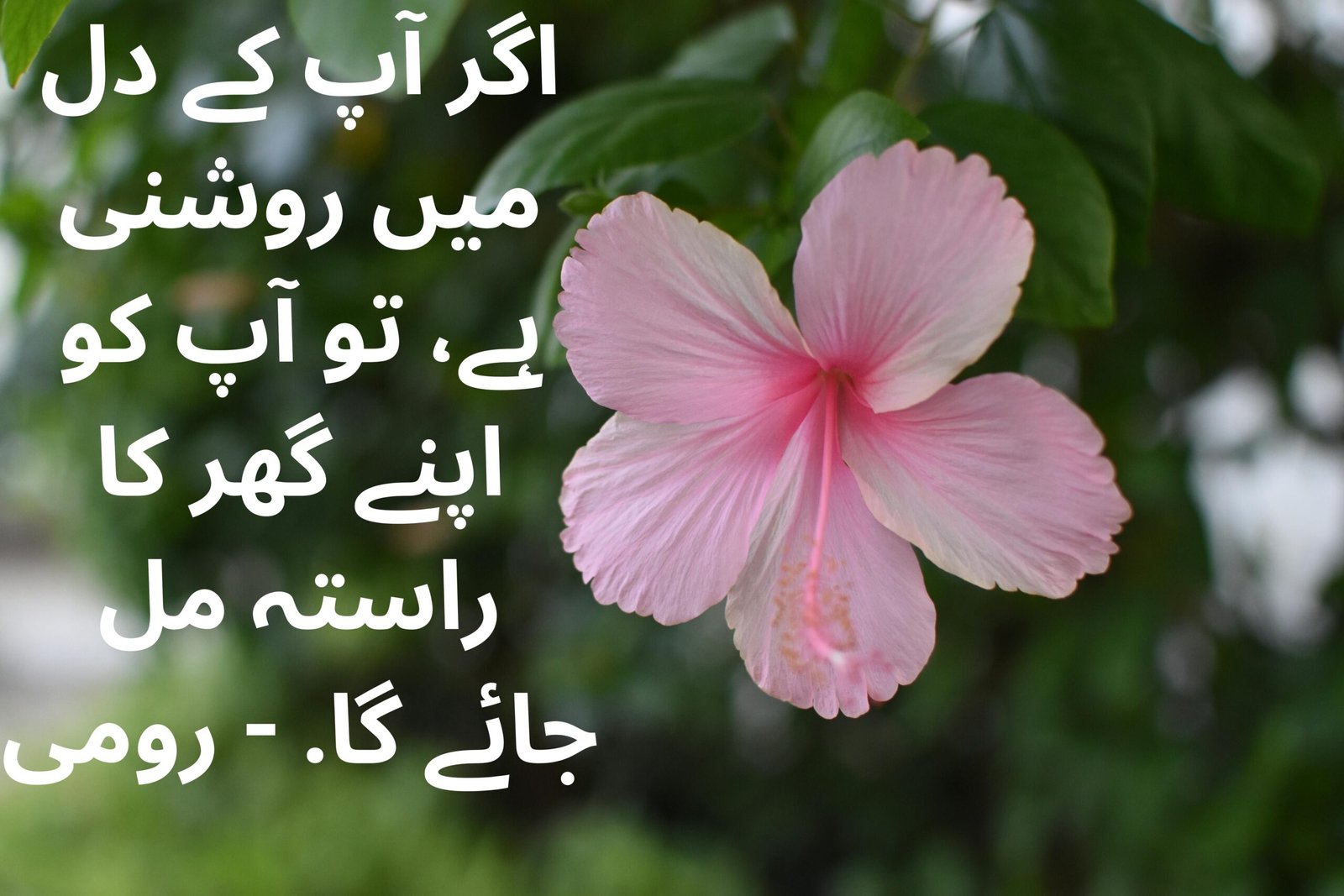

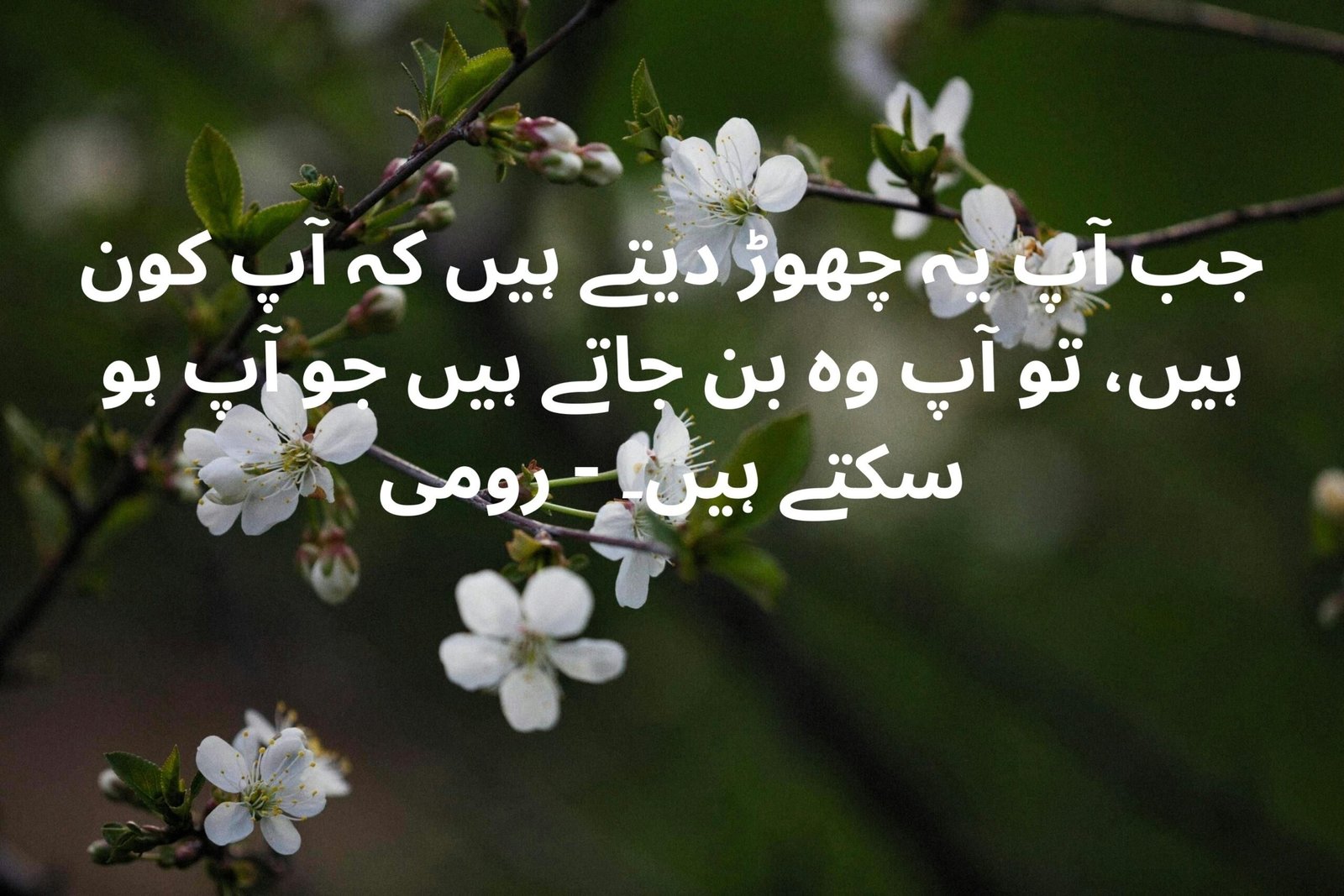



 3. Rain is grace; rain is the sky descending to the earth; without rain, there would be no life. – John Updike
3. Rain is grace; rain is the sky descending to the earth; without rain, there would be no life. – John Updike






